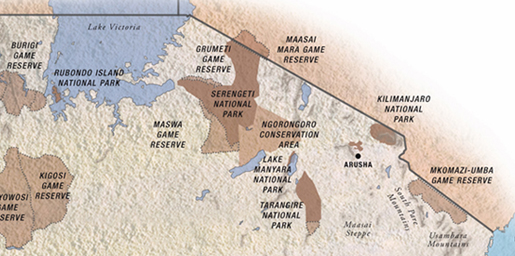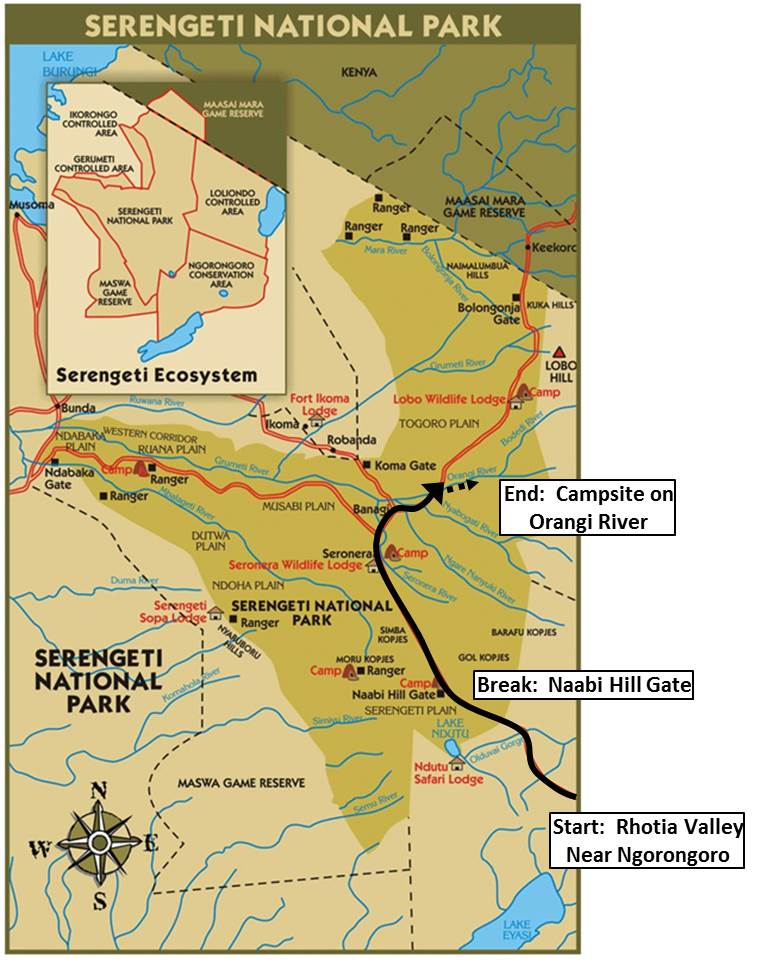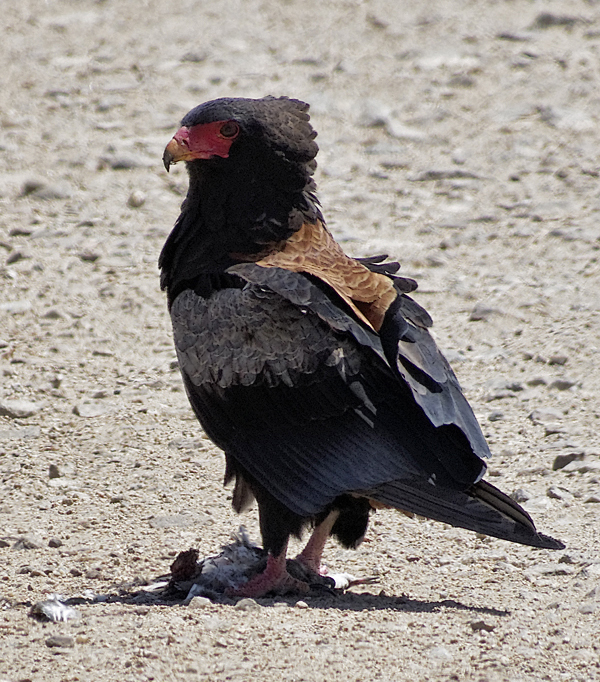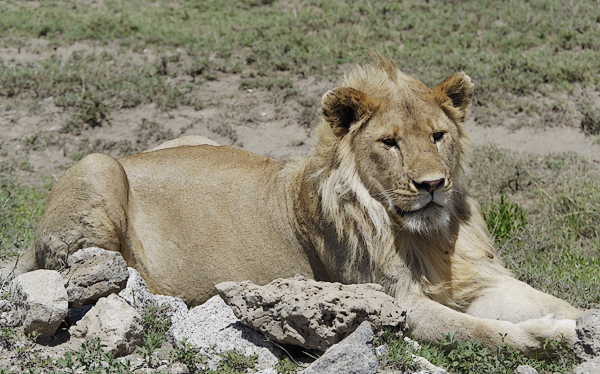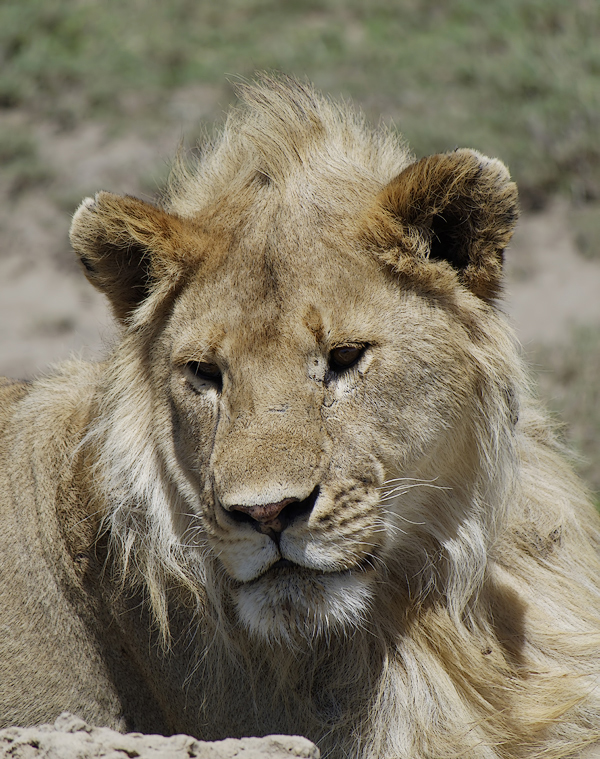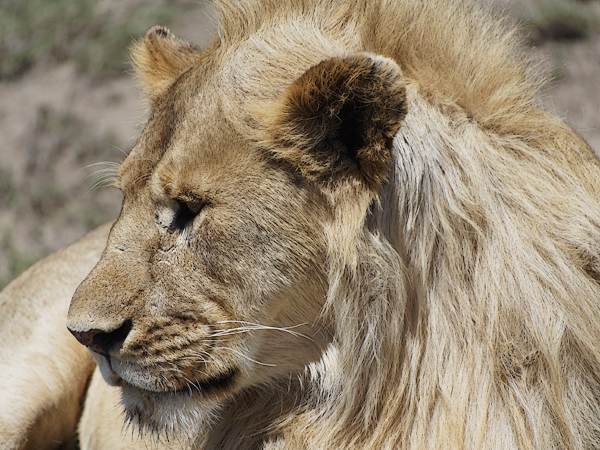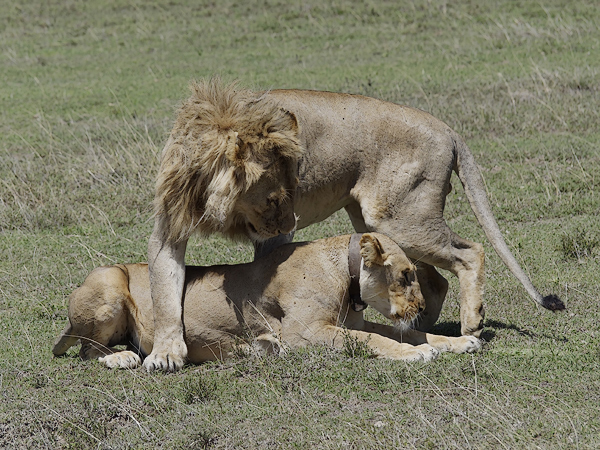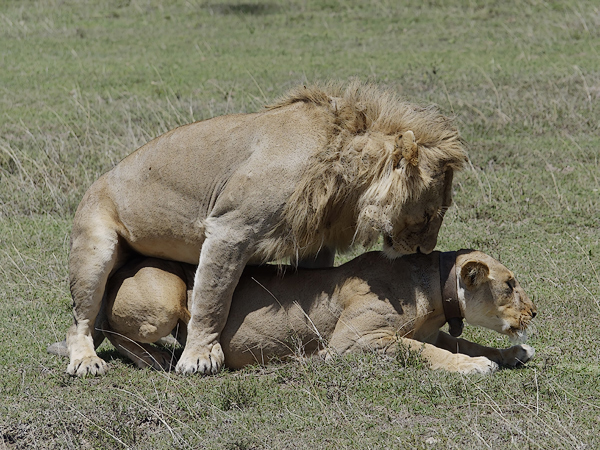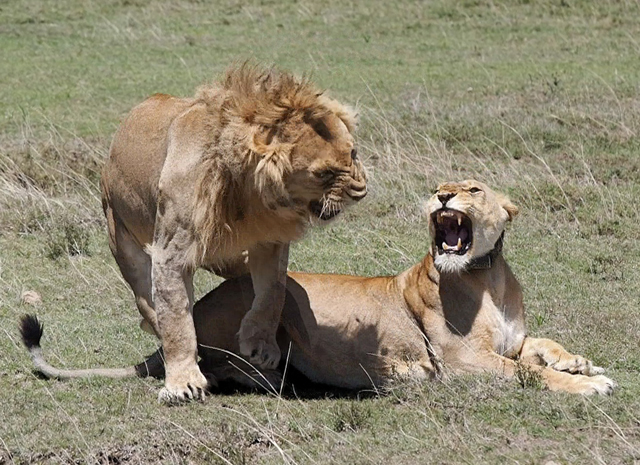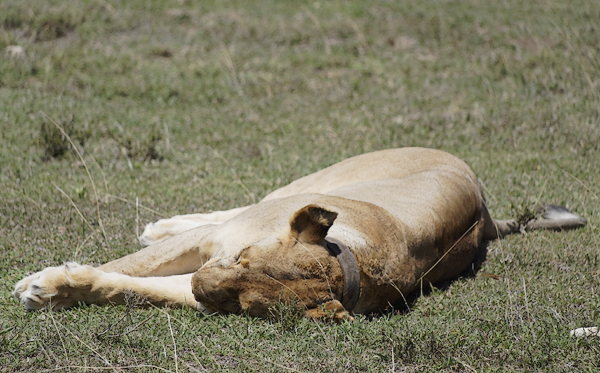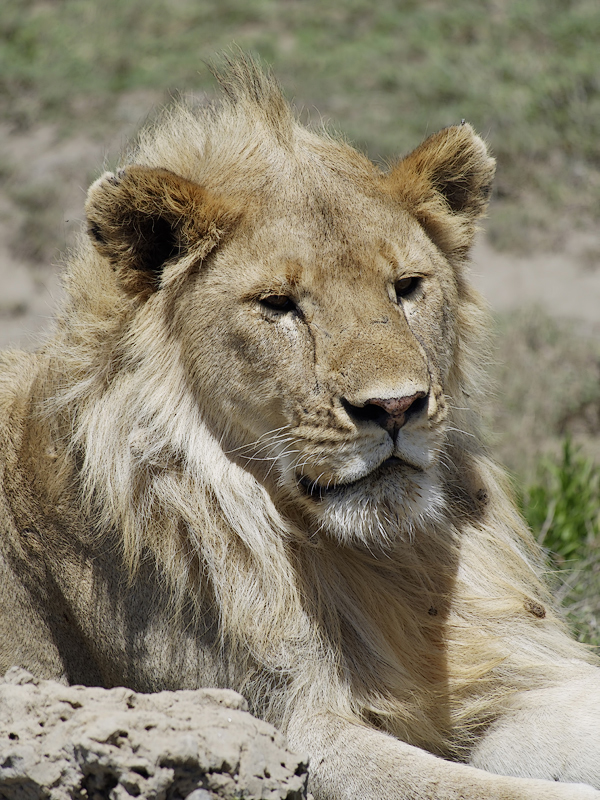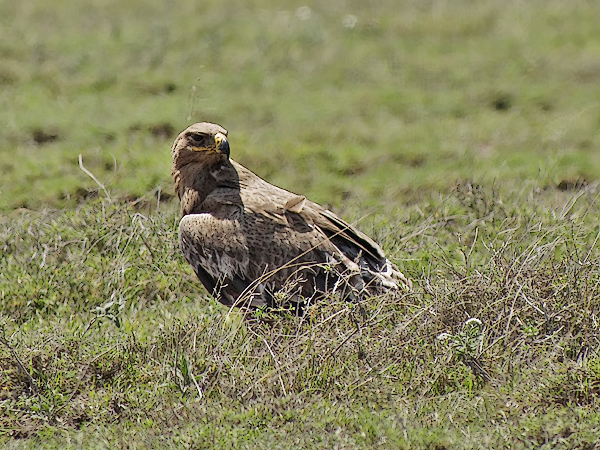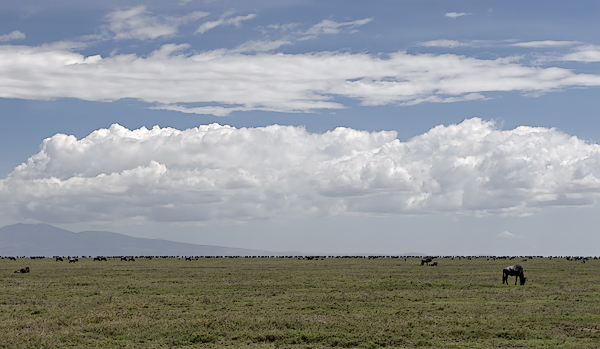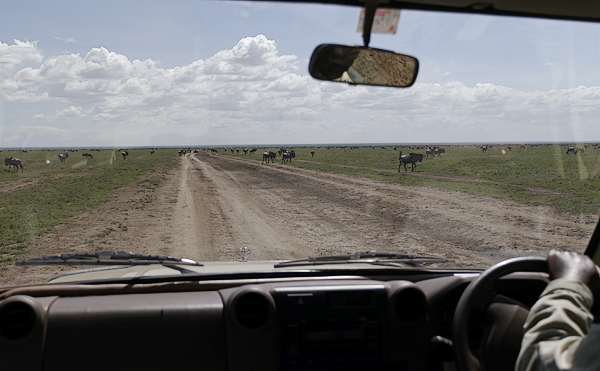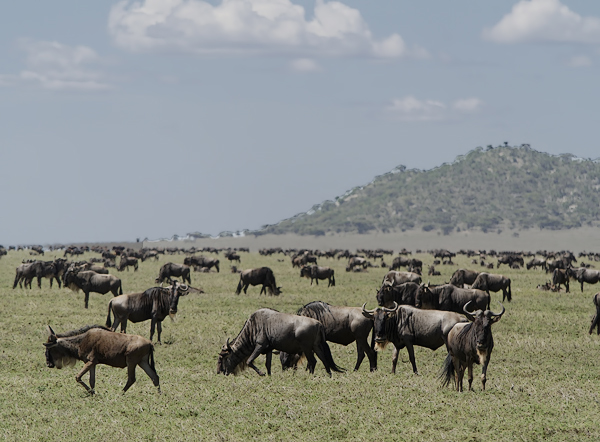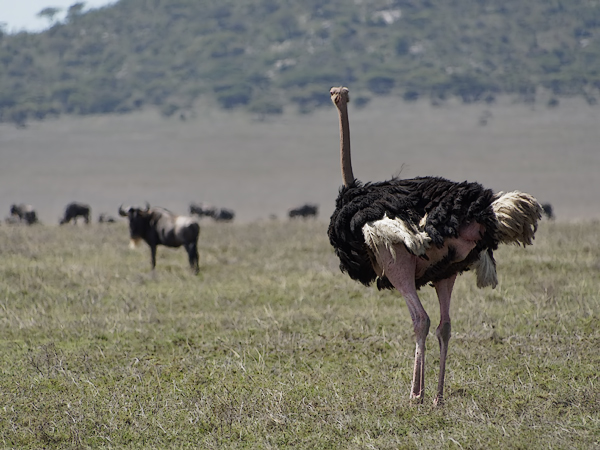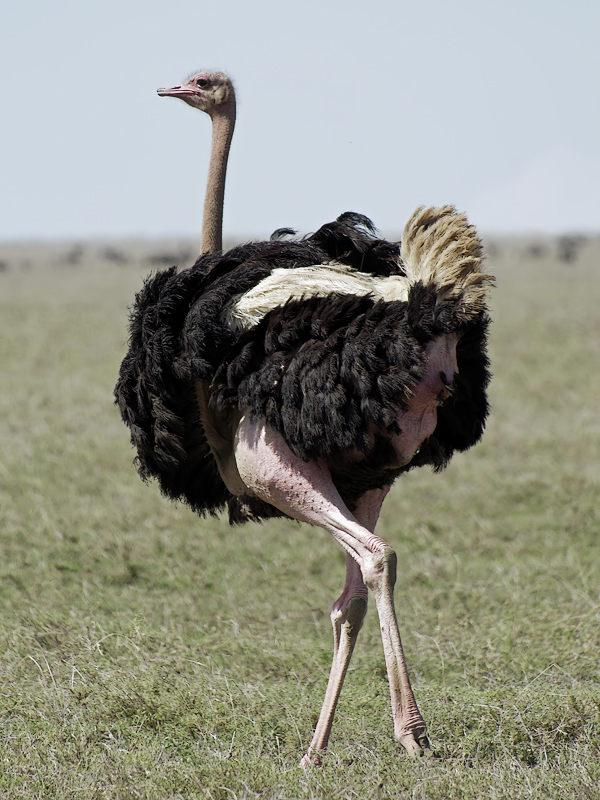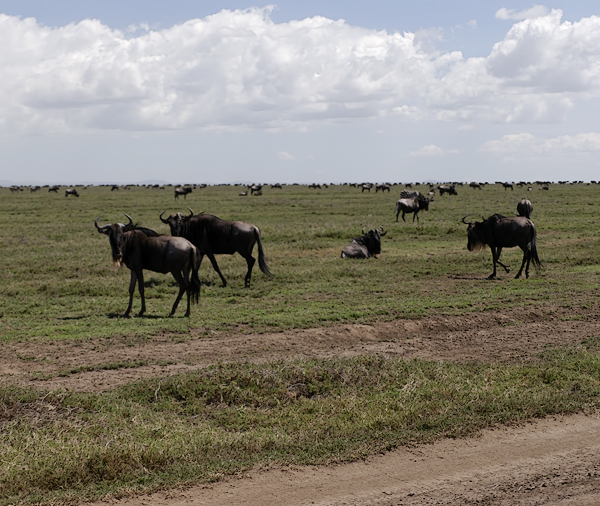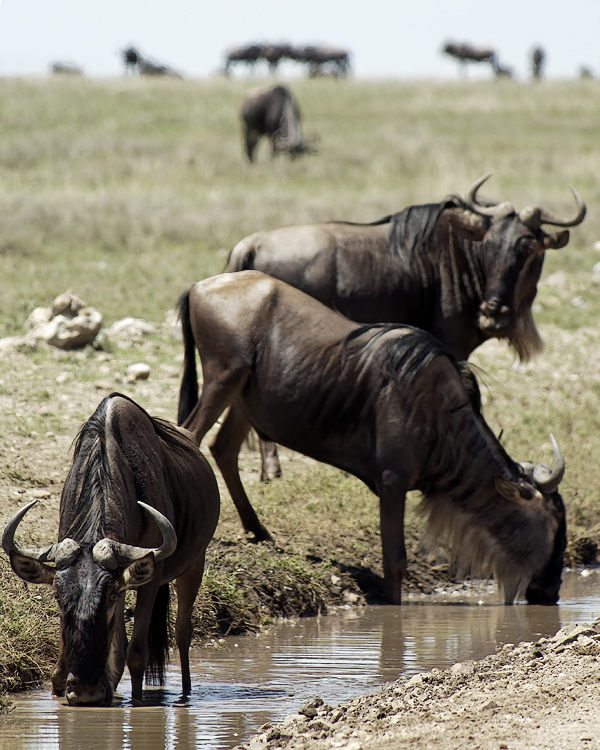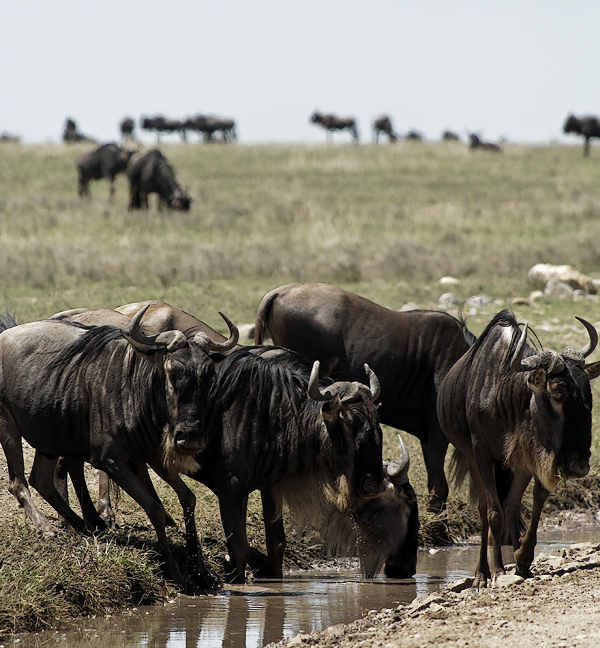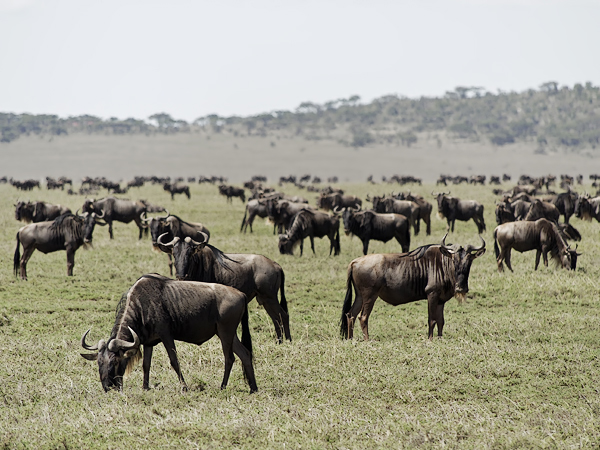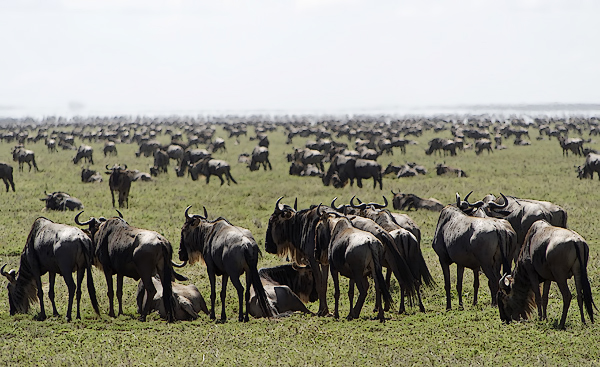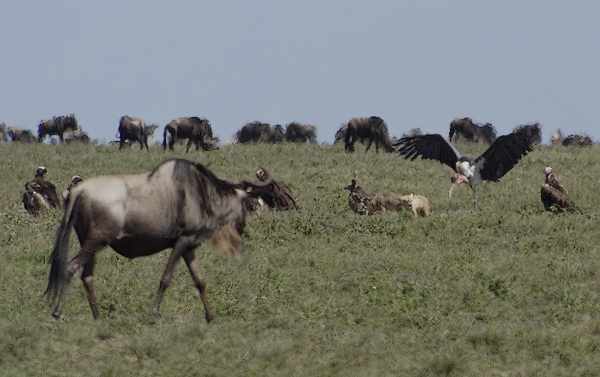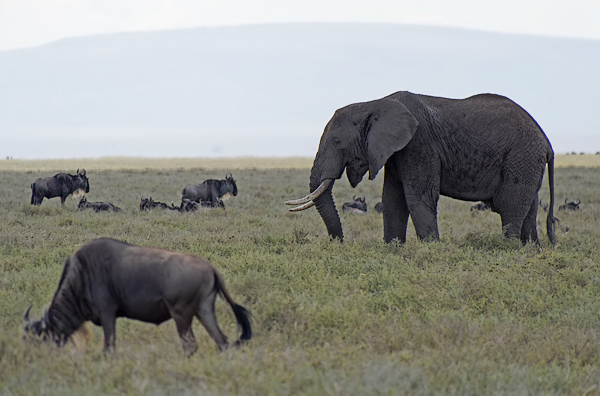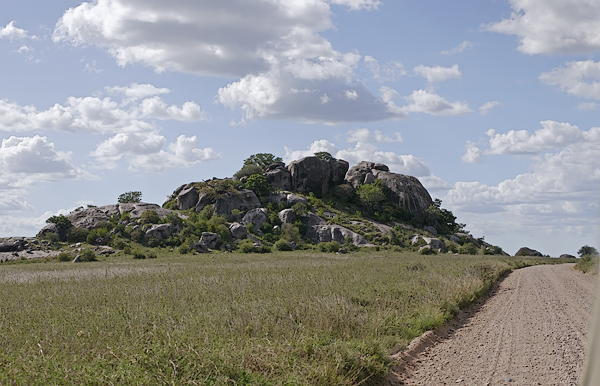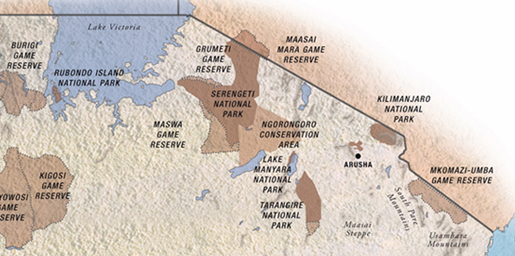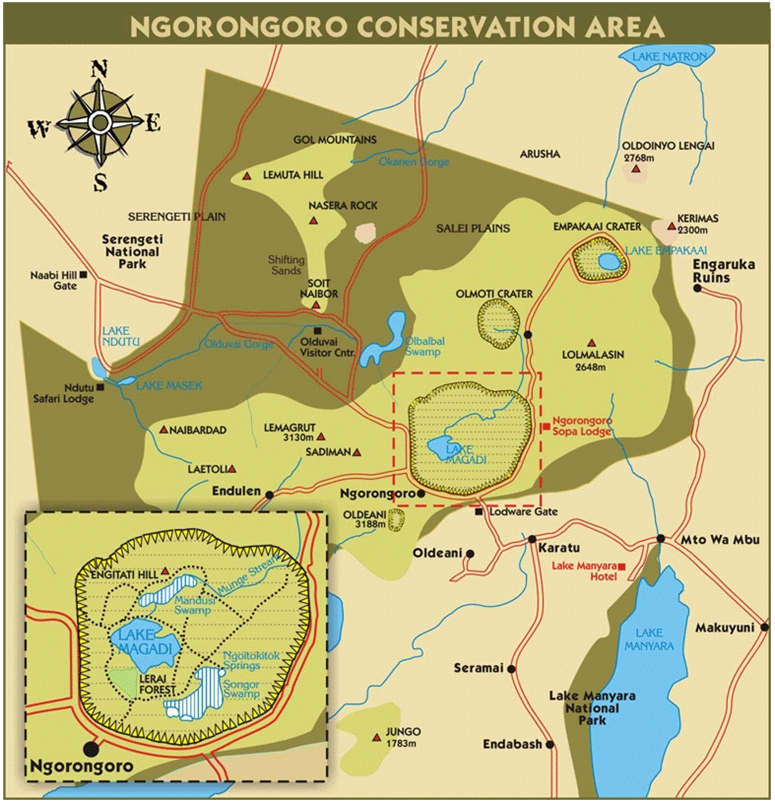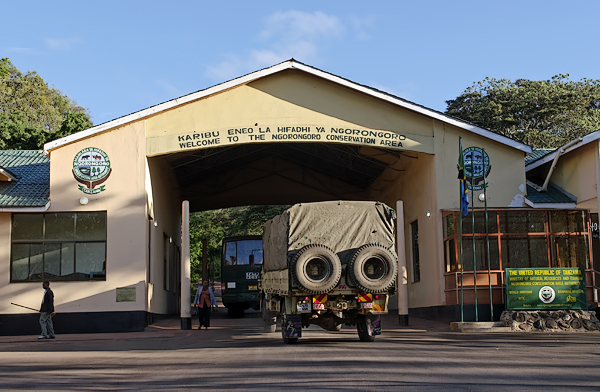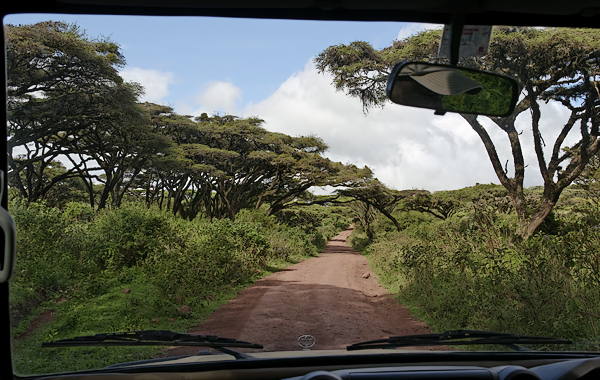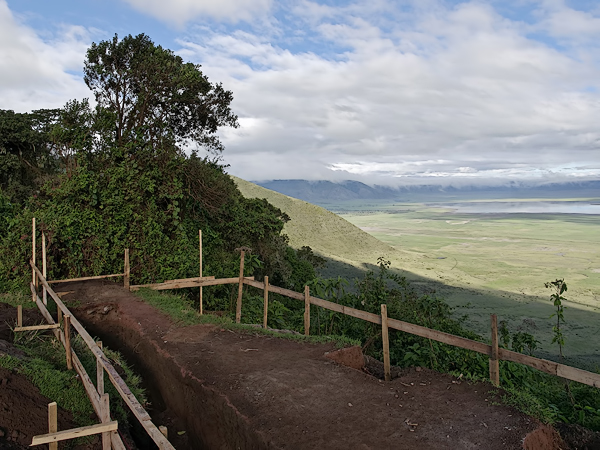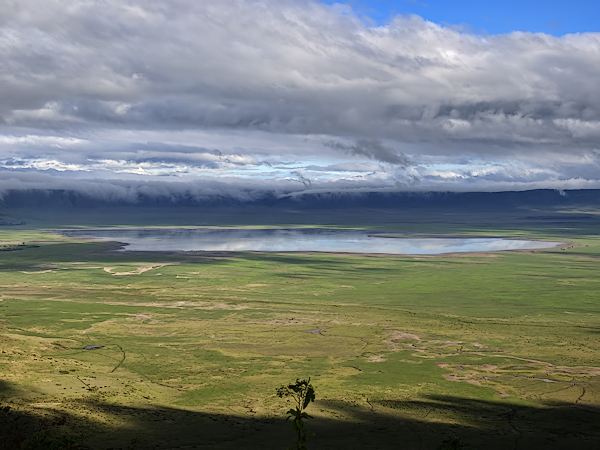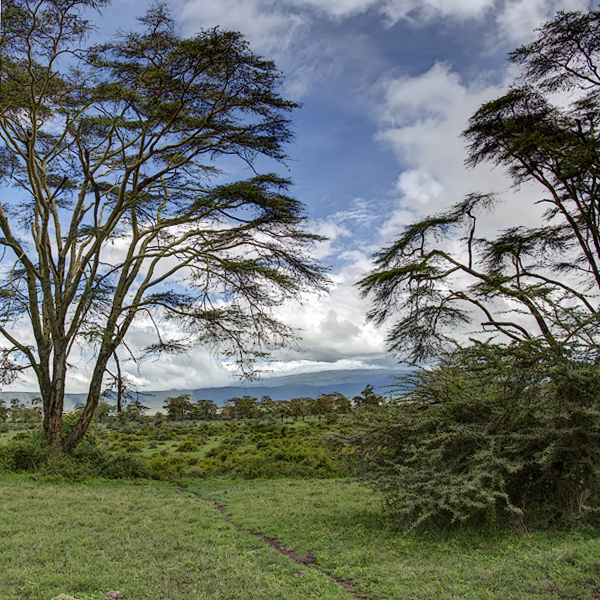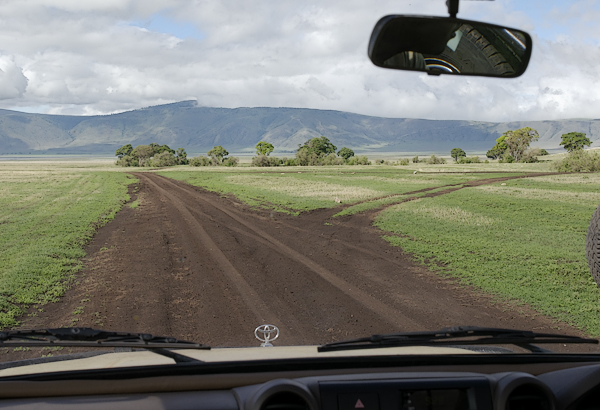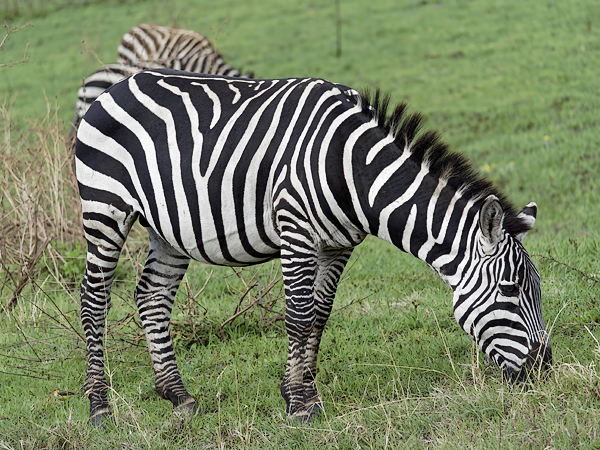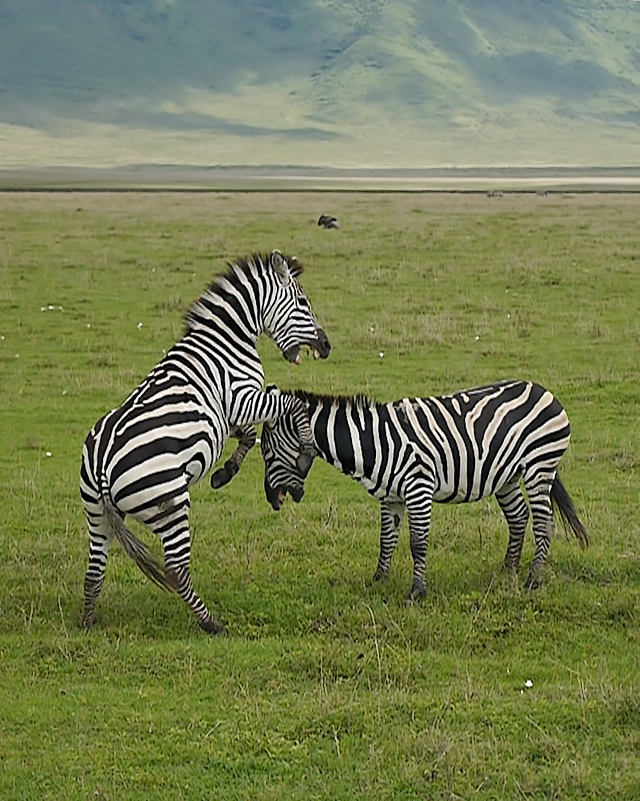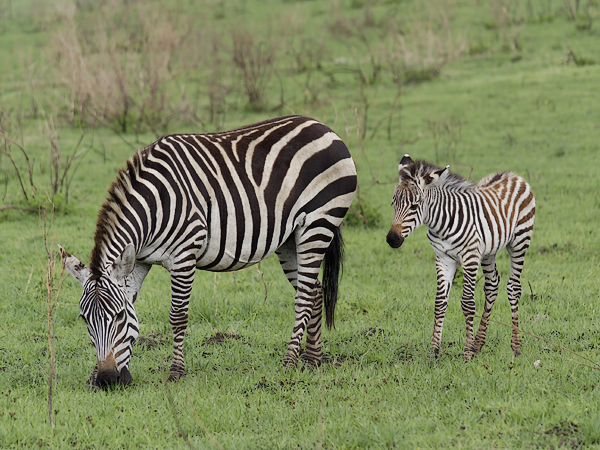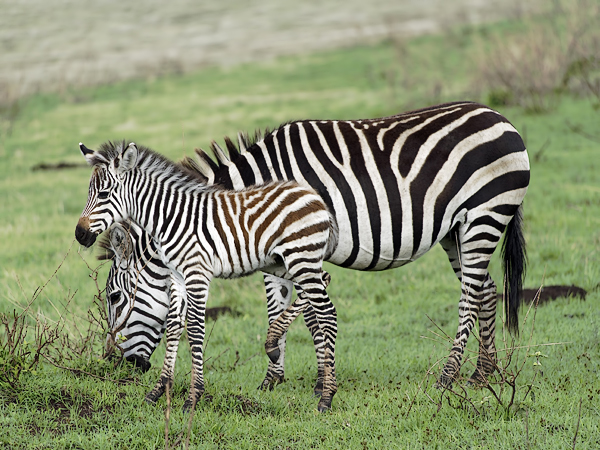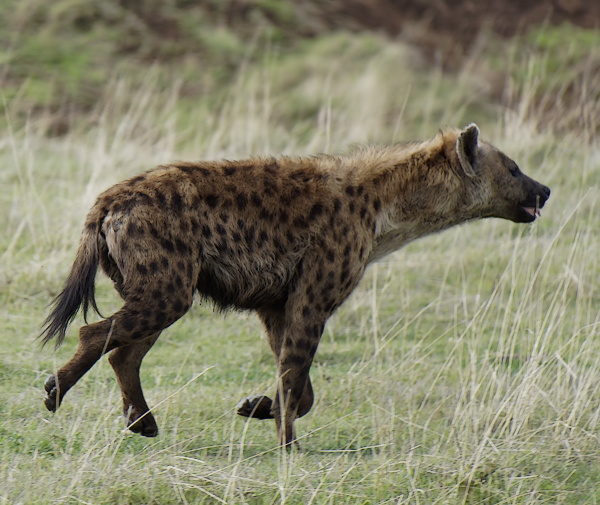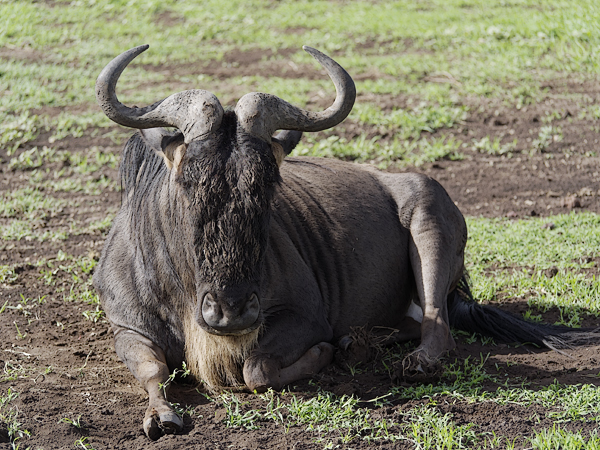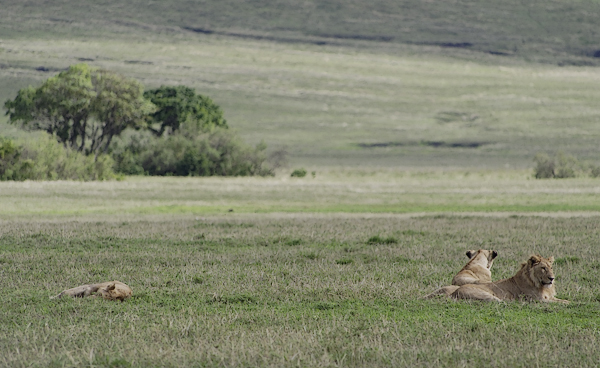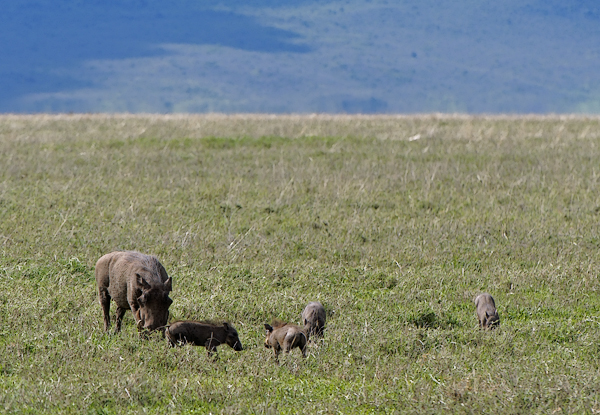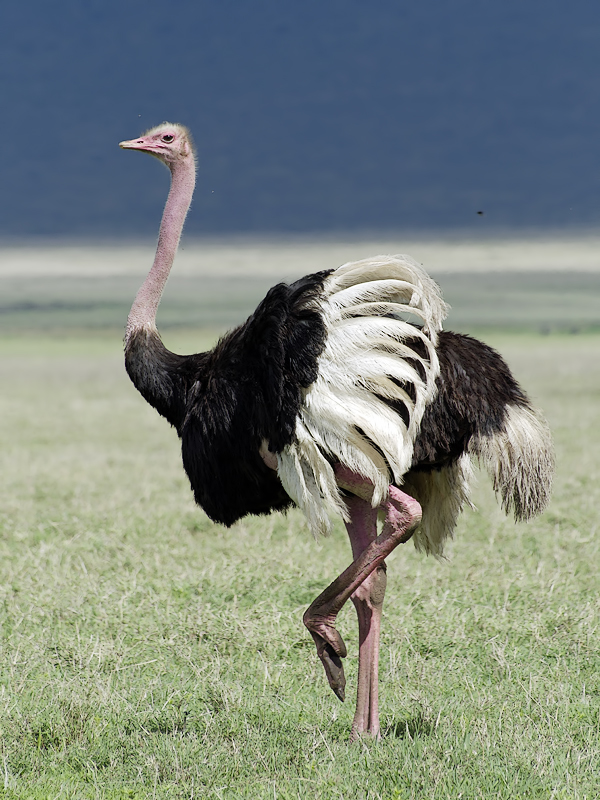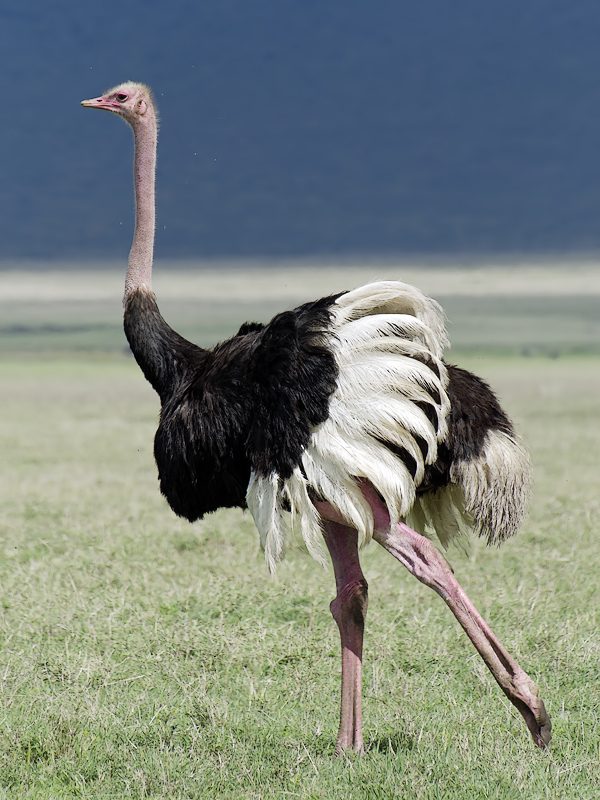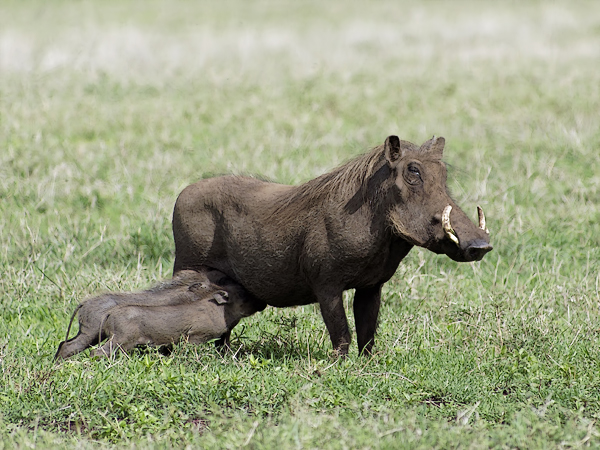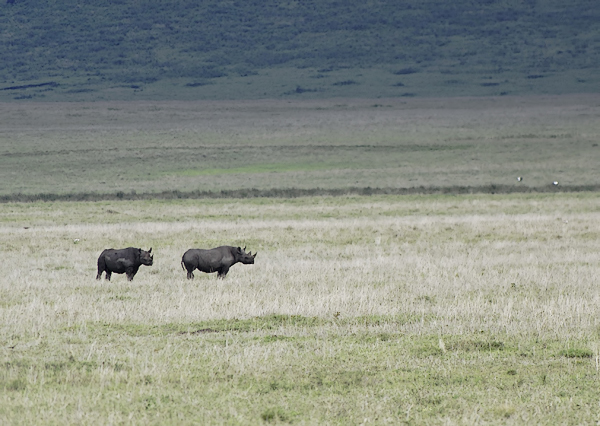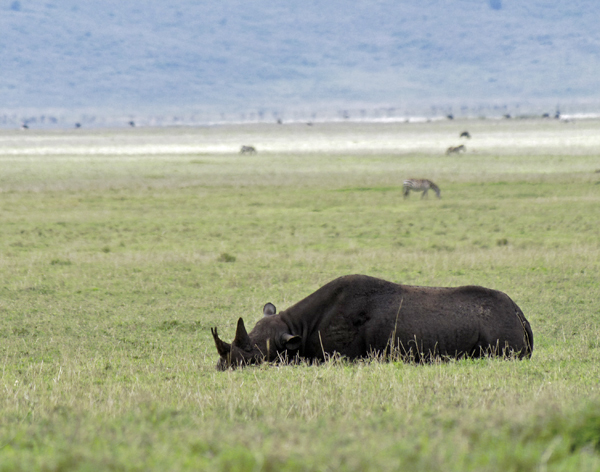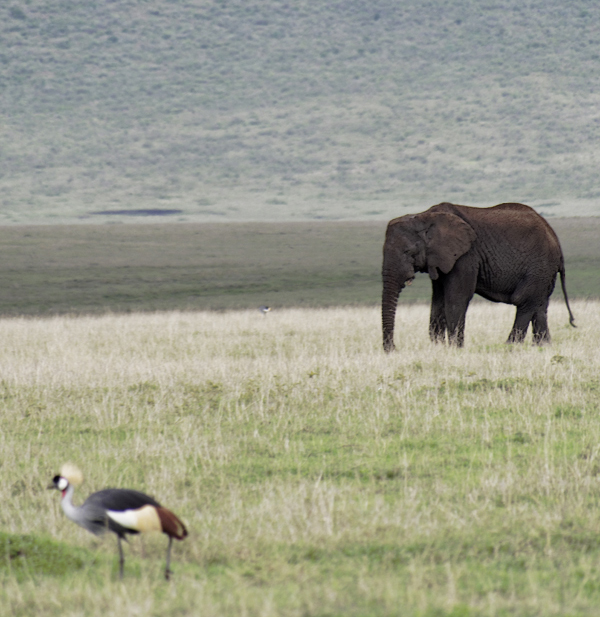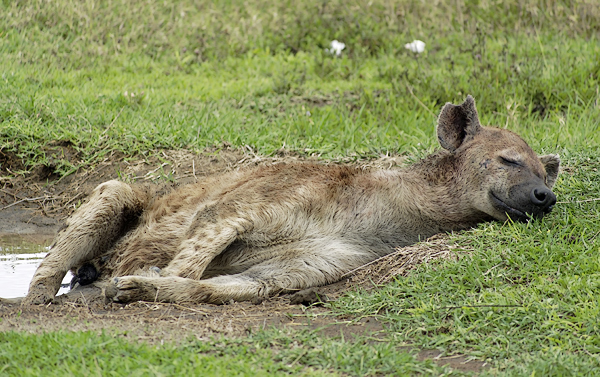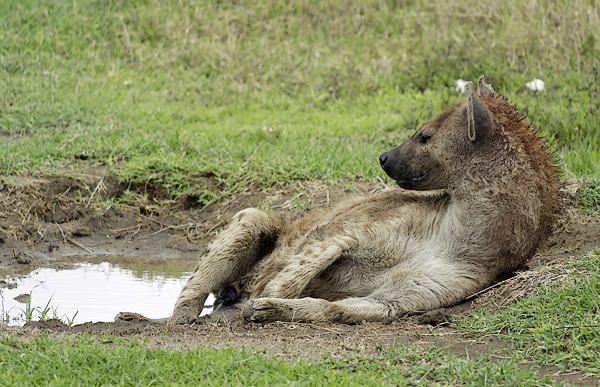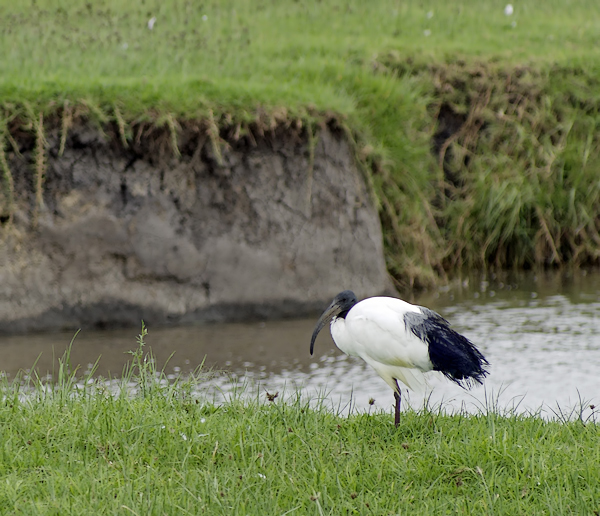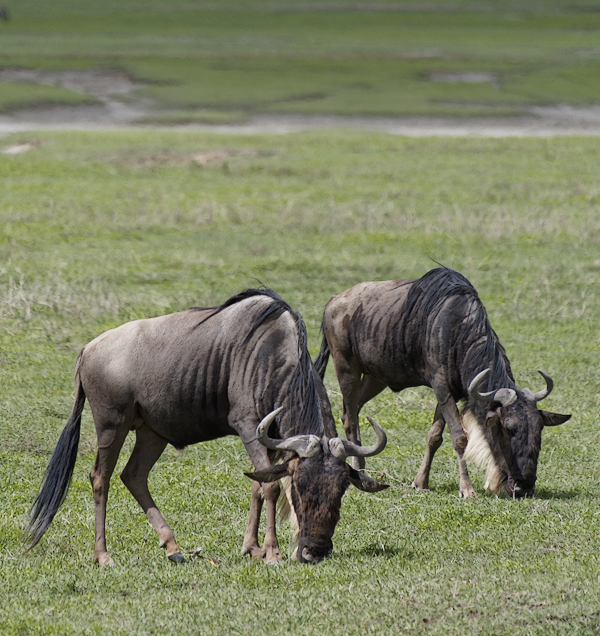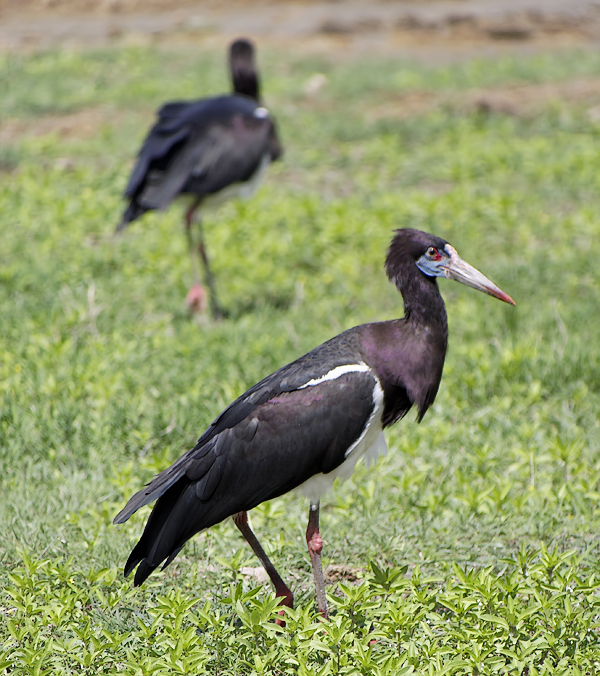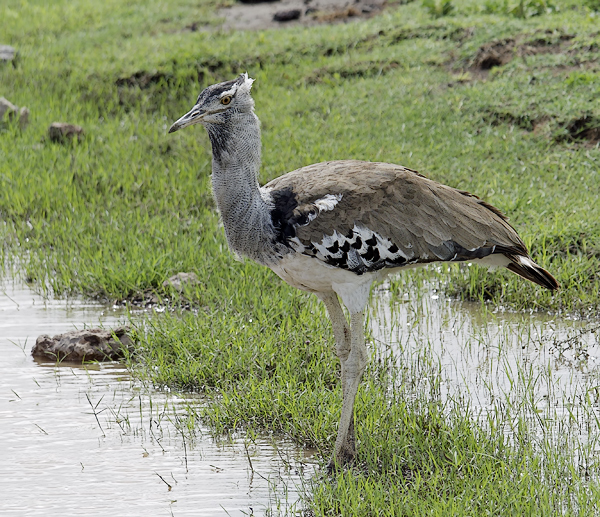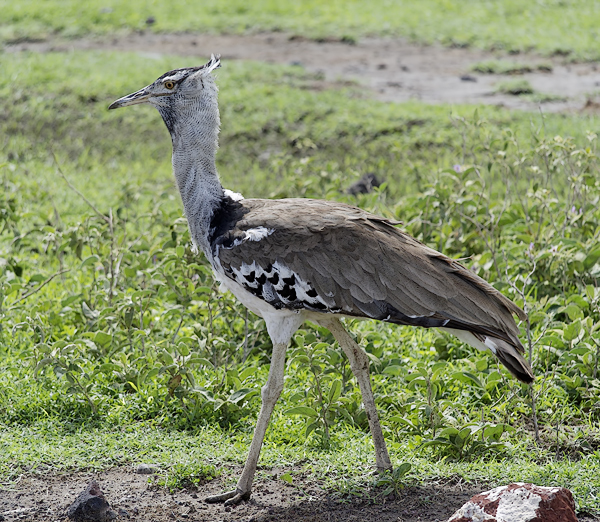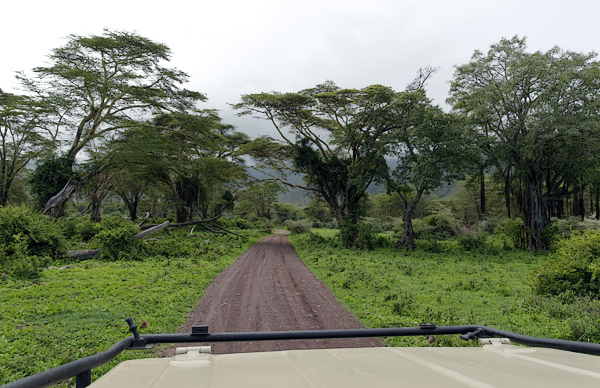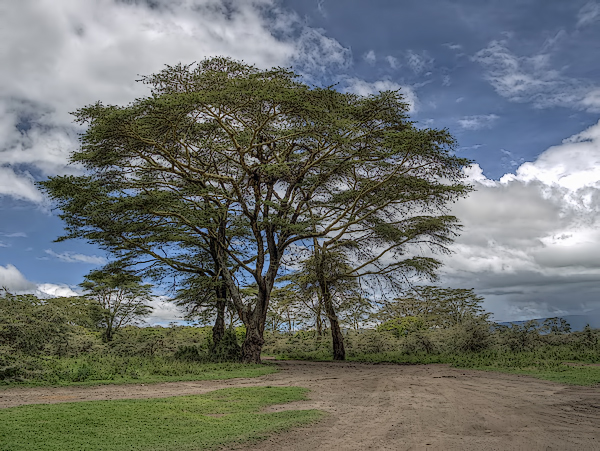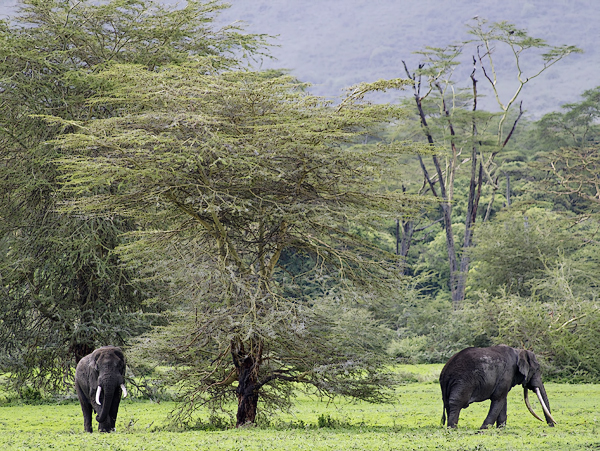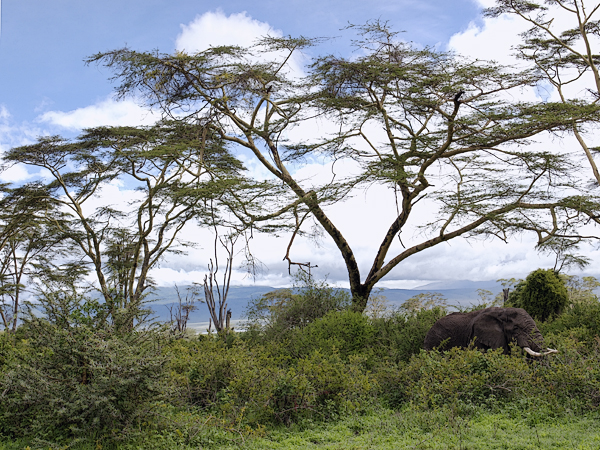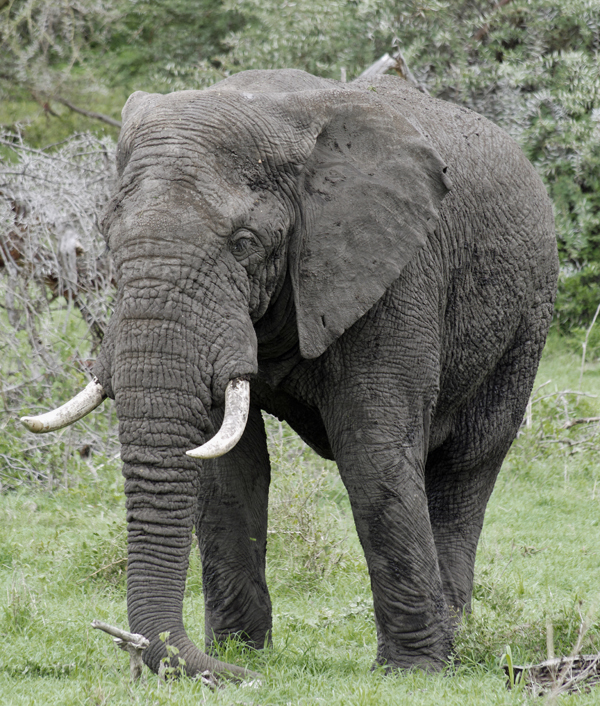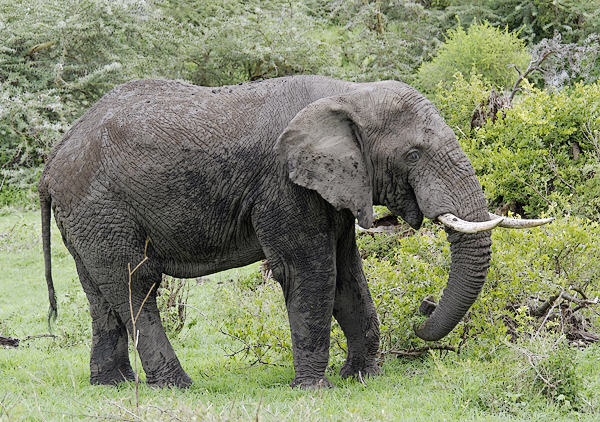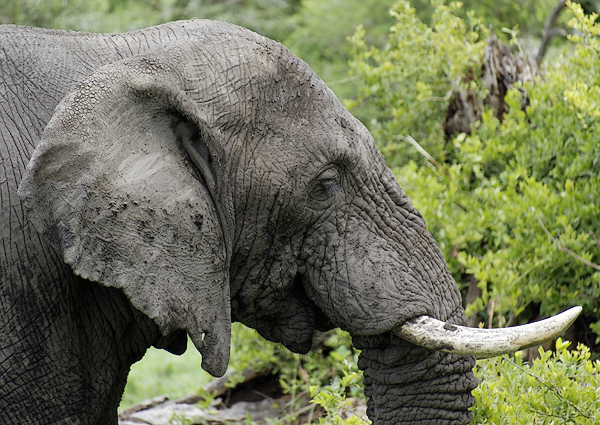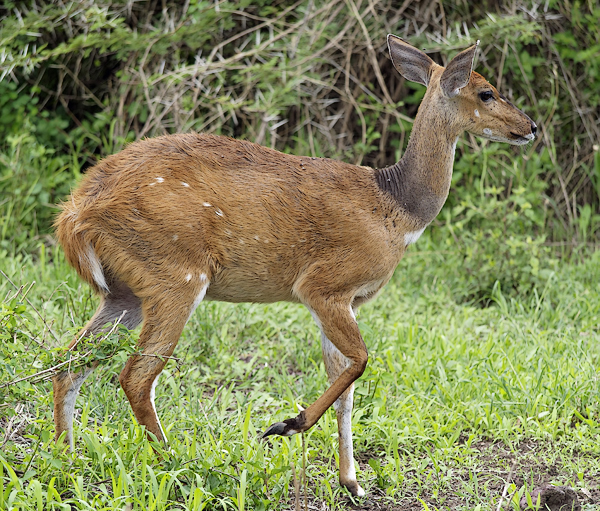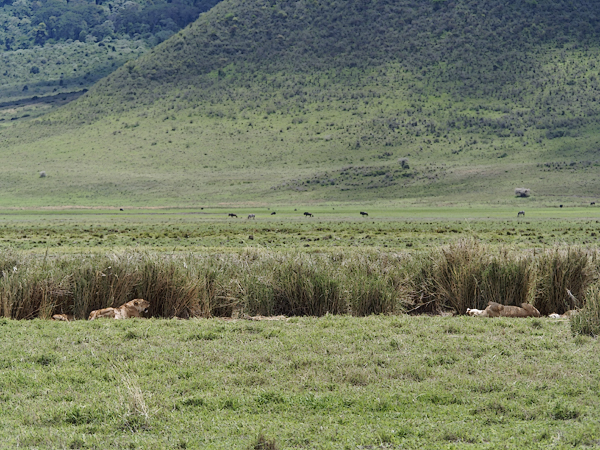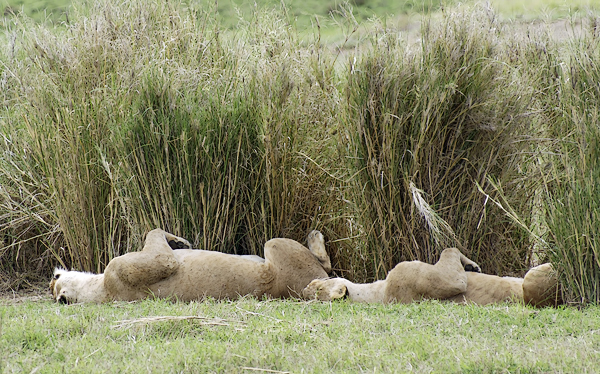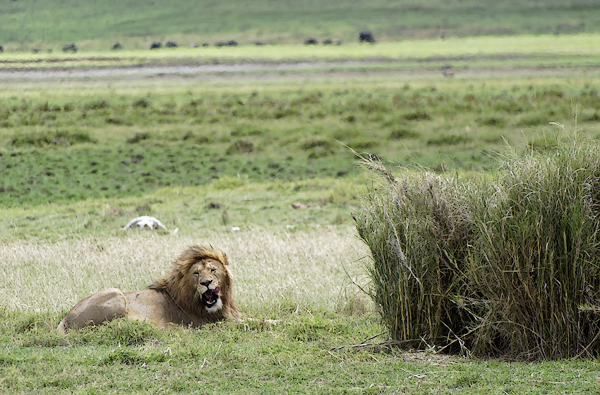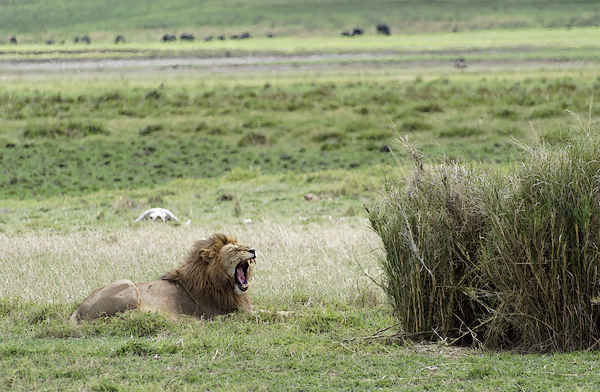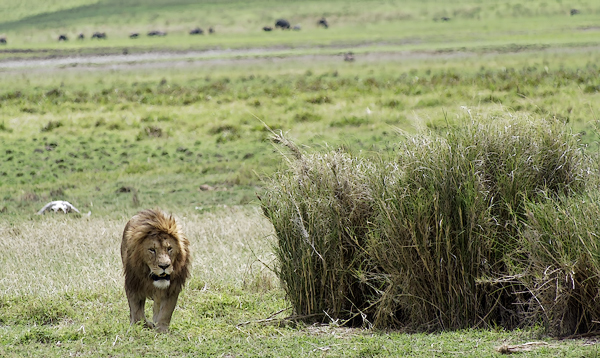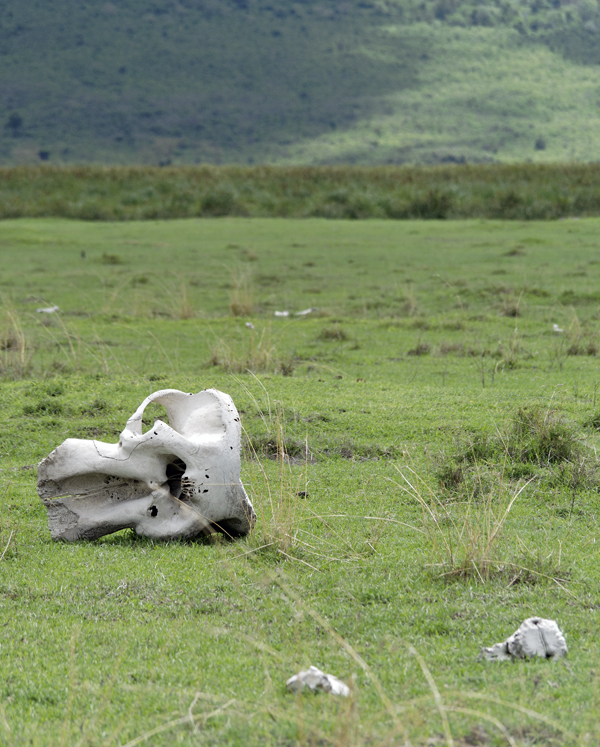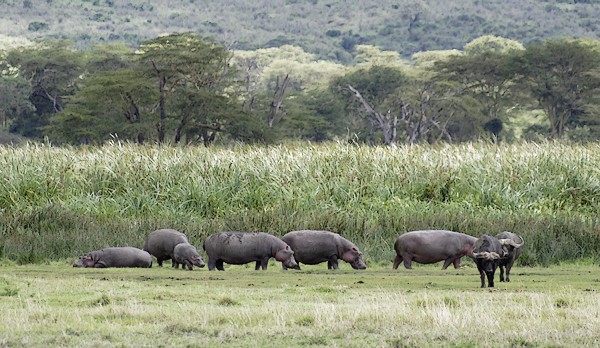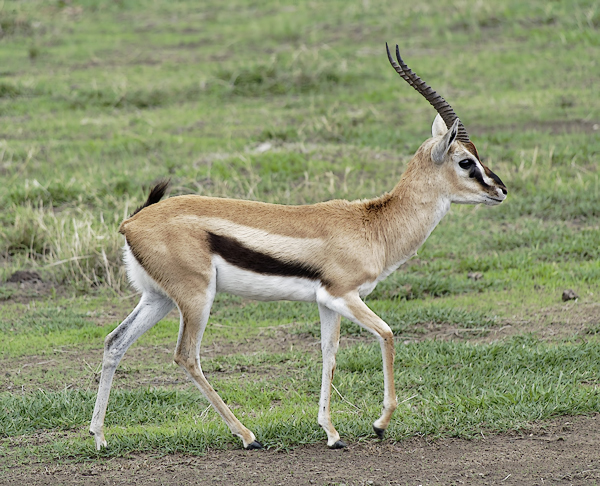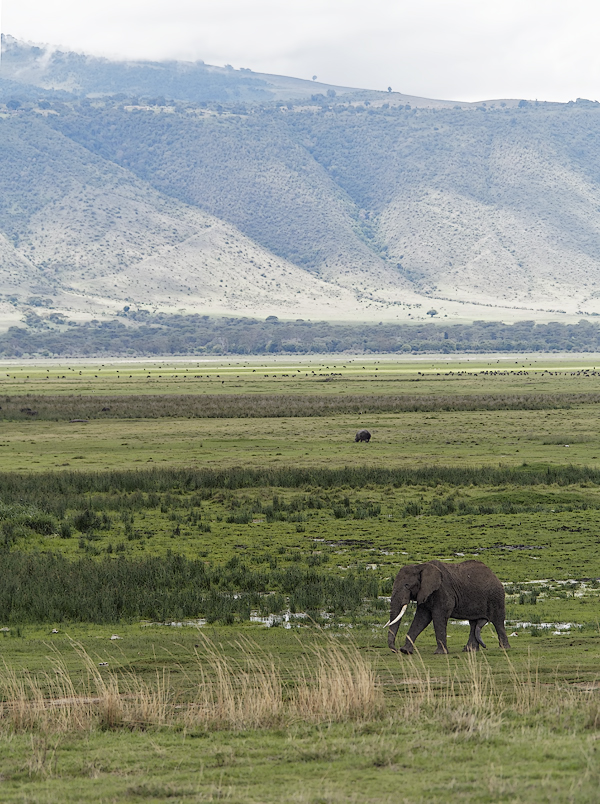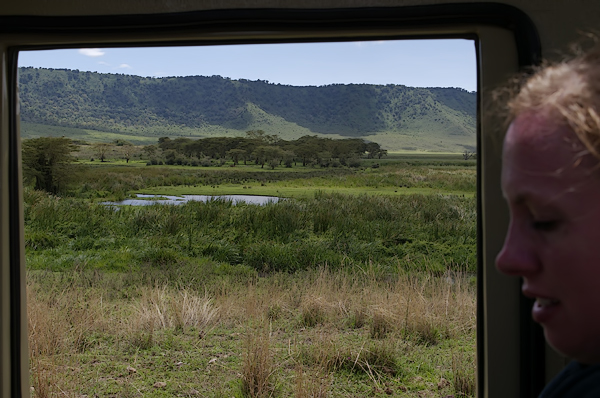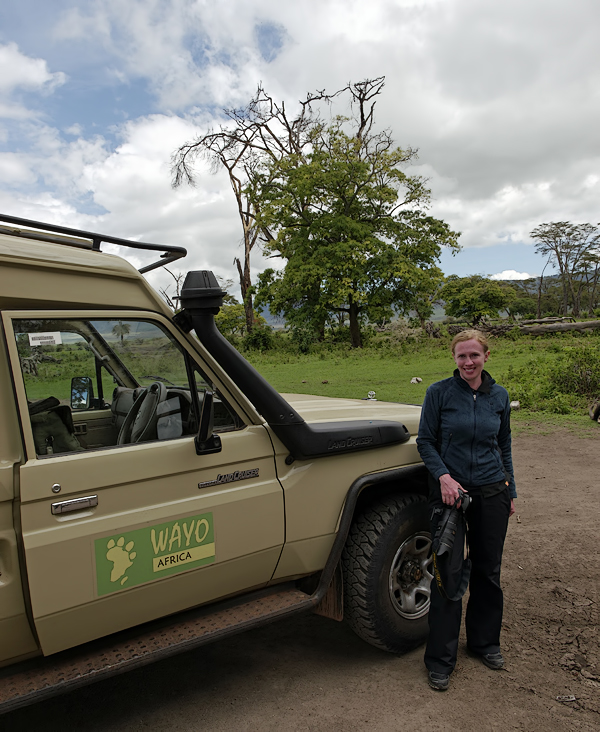Tanzania Holiday 13: Serengeti Walking Safari Day 2 - Morning
 Tuesday, July 9, 2013 at 6:00
Tuesday, July 9, 2013 at 6:00 For our "walking safari", we had only 2 days scheduled. So walking up this morning, we knew it was our last.
(links to the first day's walks are here: morning and afternoon) At least we had more game drives to come...
For the morning walk on Day 2, we again started early-ish (breakfast at 07:30, leave around 08:00).
This time we would be heading north, which was supposed to have more hills and forest than Day 1:
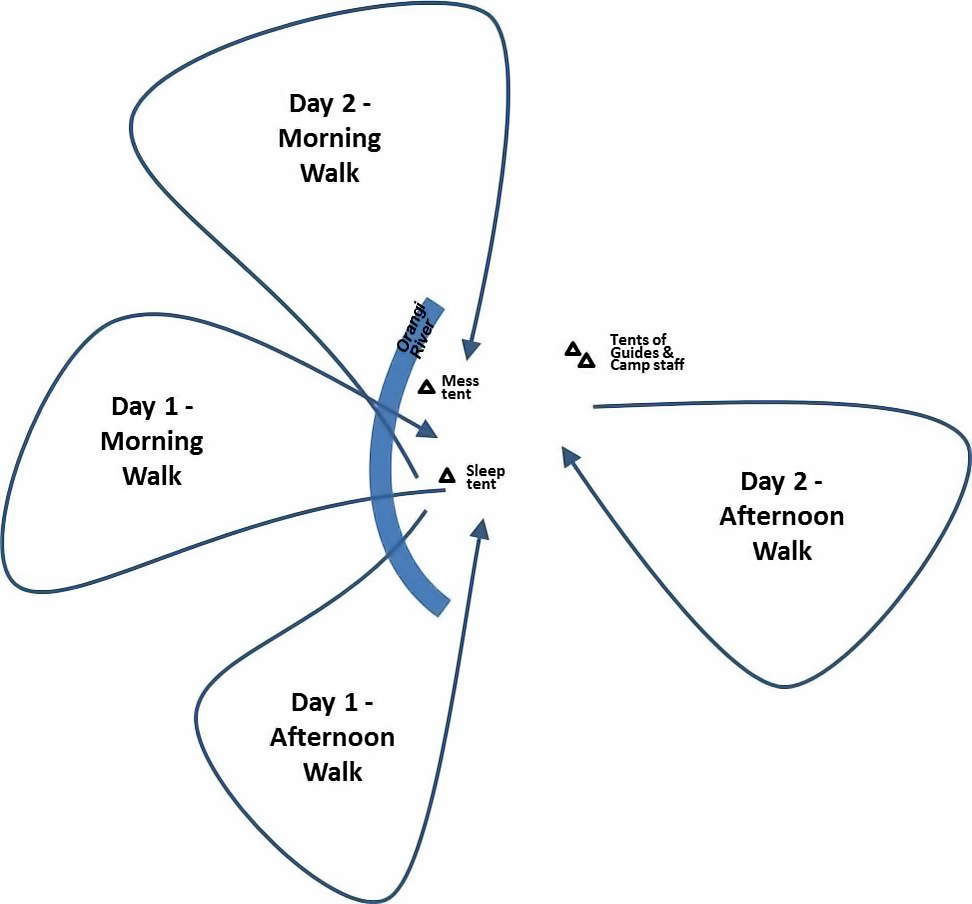
Mark took the lead this time, rather than Prim who usually had the front position:
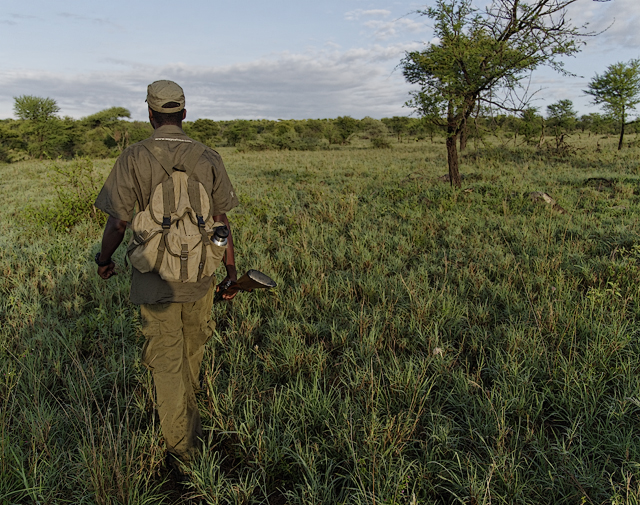
Right away, we saw some zebras near the riverbed. They had already seen us and were retreating:

Daniel, the park ranger, spotted the small klipspringer on top of a kopje too! He disappeared quickly though:
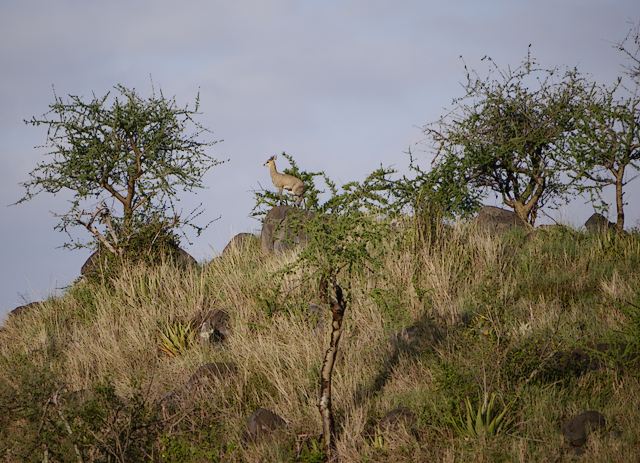
This next photo intends to give a better perspective of exactly how far away the animals stayed from us.
Remember the zebras from the first photo? Two are running up the bank, and a third behind. Way out there!

Most of the wildlife photos were taken with a 100mm-300mm zoom lens, with a crop factor 2x camera.
This means that in 35mm/full frame angle of view, it is a 200mm-600mm lens. Pics are cropped too!
The zebras and klipspringer were gone, so we again turned our attention to the rocky Orangi riverbed:

The landscape was lovely too, not just the animals... so the normal lenses weren't completely ignored:
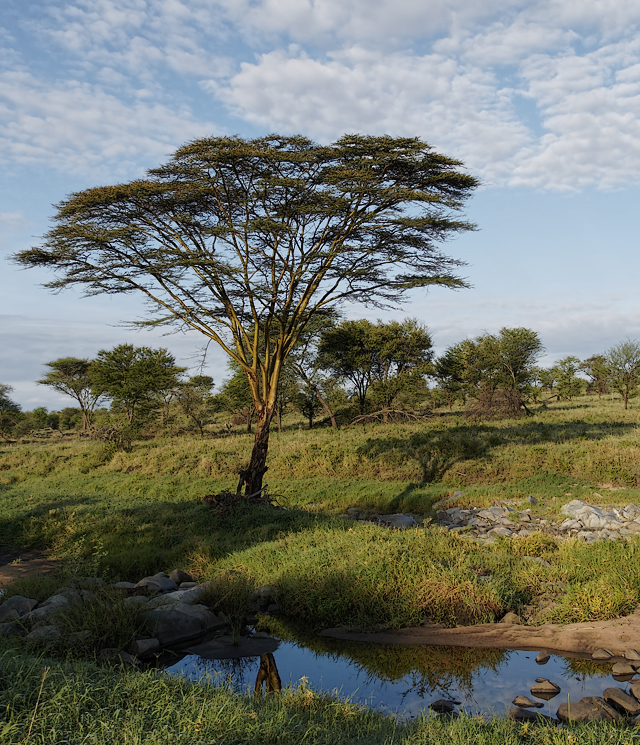
Walking along the riverbank, we continued to look into the hills for more animals.
We spotted a bohor reedbuck -- like the others, very cautious and keeping far away:
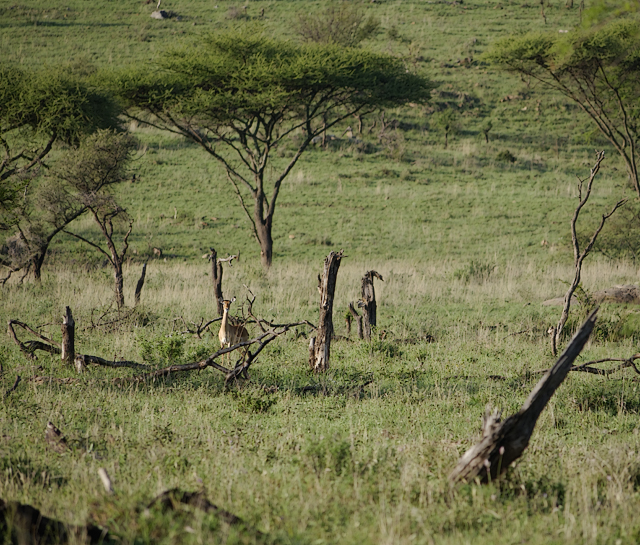
Mark wanted to try our cameras, so I handed him mine & he lined us up in the riverbed for some photos:
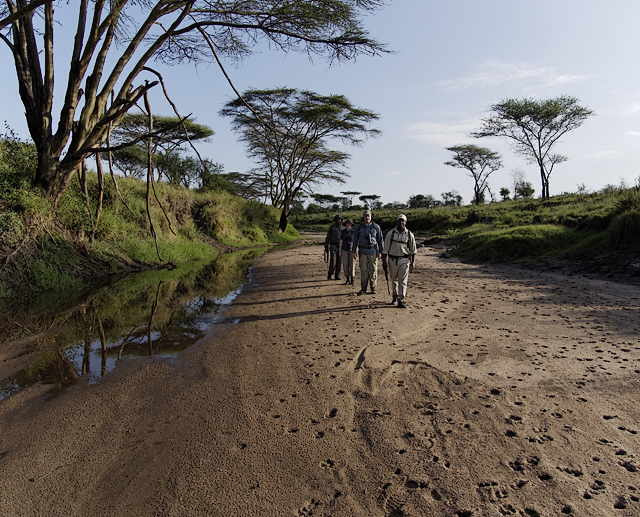
That's Prim (main guide) in front, then Herr J, Frau A, and Daniel (Serengeti National Park ranger) in the back:
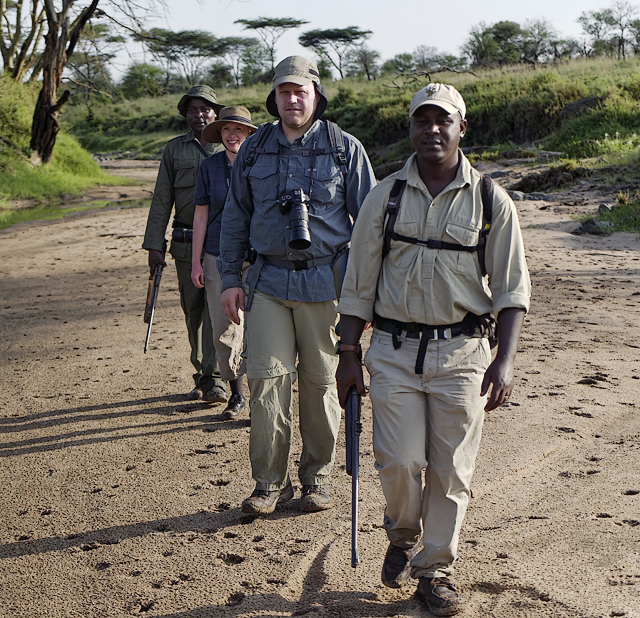
This was the view as we walked along the sandy bottom of the Orangi River. The trees here have yellowish bark. Natives used to think they caused Yellow Fever... but it's really the mosquitos who transmit the virus:

We finally turned out of the riverbed, and headed up one of the nearby hills. When we reached the hilltop,
we could look back and see the winding river, and behind it a vast plain with scattered acacia trees:
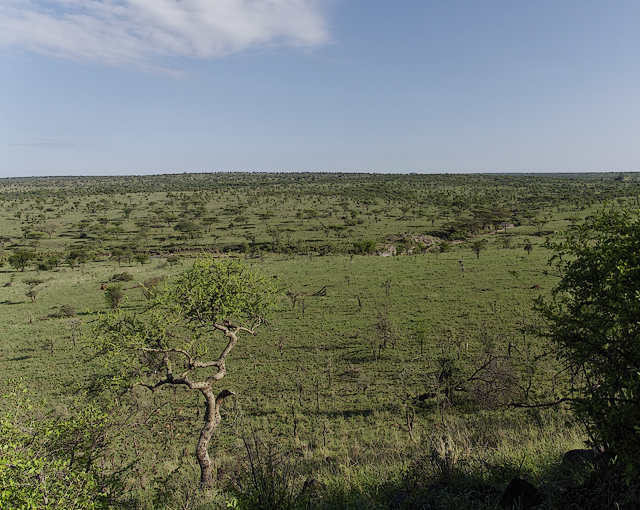
Here's a zoomed-out view of the acacia forest, with the Orangi River in the foreground:

We continued to the other side of the hill, with more scrubby/brushy terrain. Two ostriches near the tree:
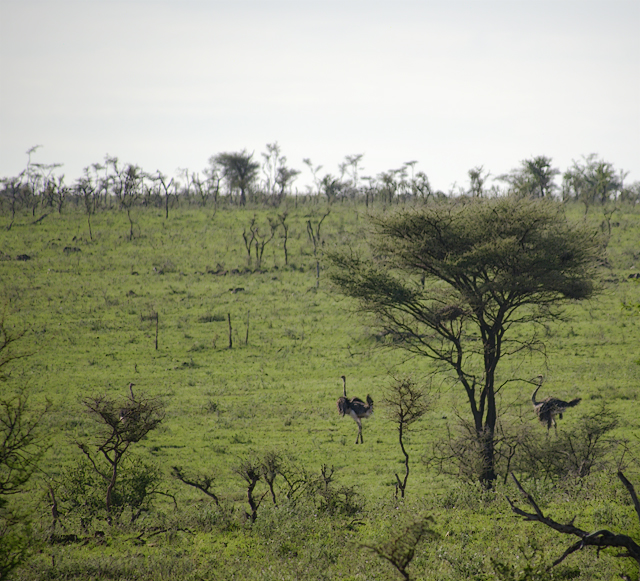
A few times we walked by poachers' old wire traps (no photo). Our guides made sure they were harmless.
This area also has had its share of gold hunters (also outlawed now), and there are old mine entrances too.
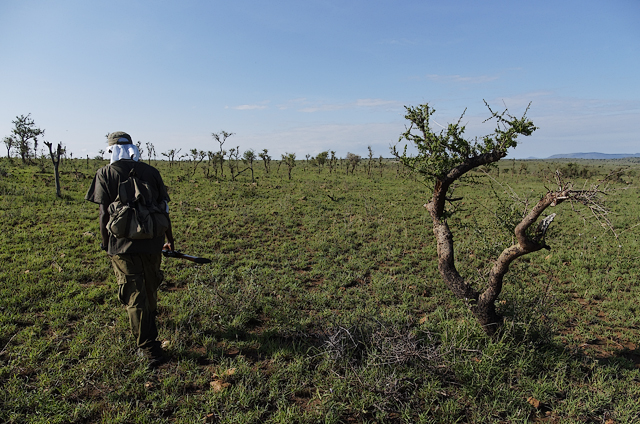
We spotted this giraffe the next hill over...
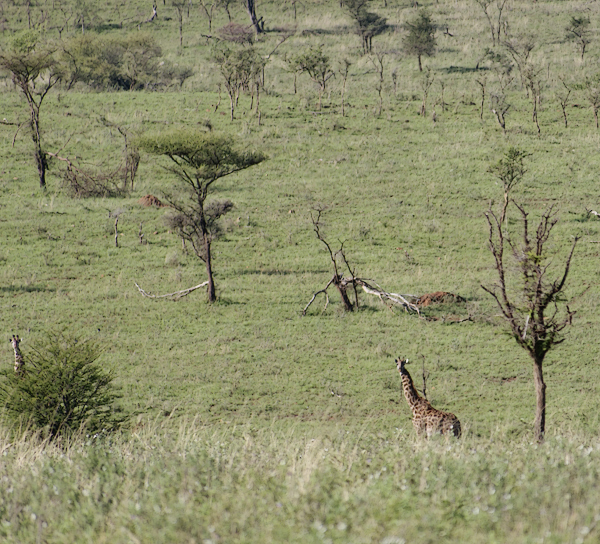
... but he wasn't interested in sticking around and posing for photos:
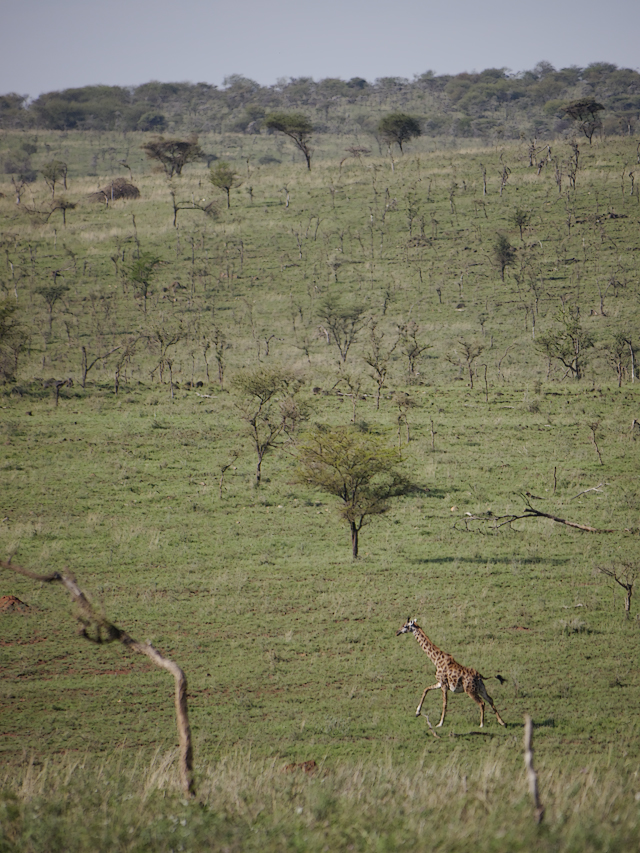
But, he did lead us to his friend (also, notice the antelope on the upper right of the picture)...
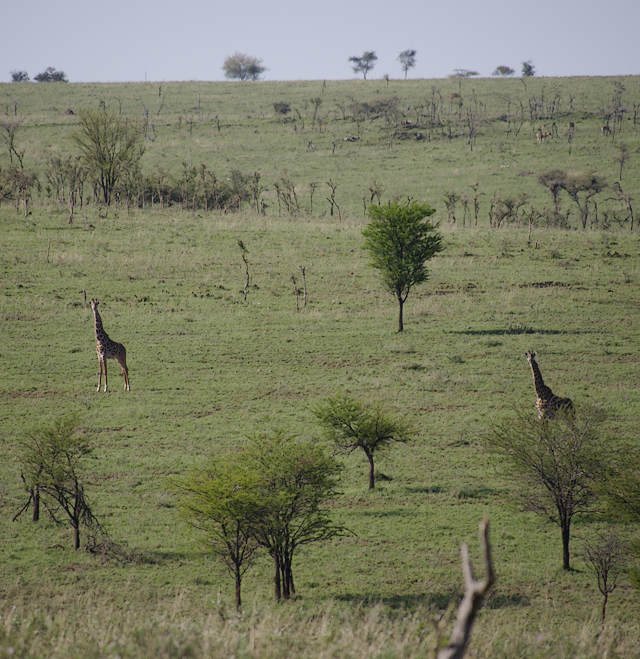
... and then we found the whole herd. All of them using their height to spy on us from afar:
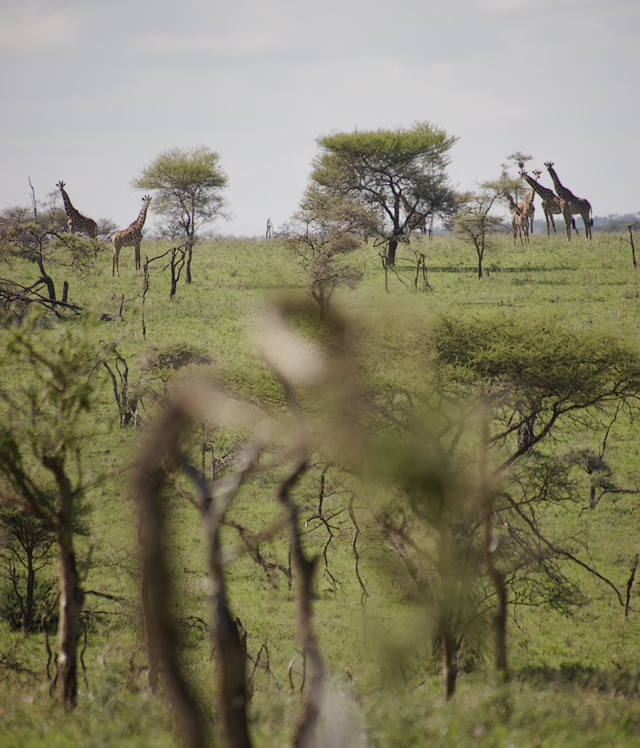
All other animals in this area watch the giraffes for signs. These water buffalo already were jogging away:
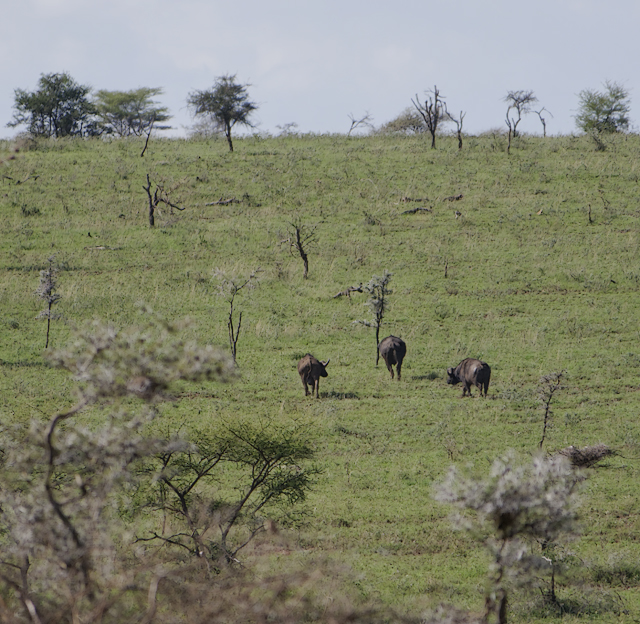
After the animals had cleared out, we went back to traversing the plain:

Frau A always asks me to take a photo with the Olympus "Dramatic Tone" art filter, just for fun:
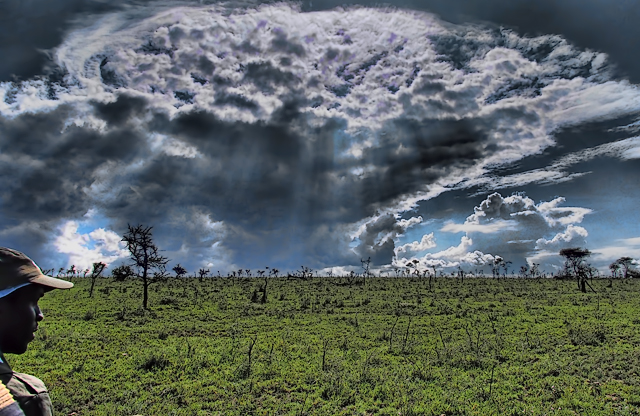
We stopped for a minute as the guides explained a little more about this tree to us (below). It's called
acacia drepanolobium, or, the whistling thorn. As usual, it is easier to let Wikipedia give the interesting details:
"The base of its thorns is bulbous... These swollen thorns are naturally hollow and occupied by any one of several symbiotic ant species. The common name of the plant is derived from the observation that when wind blows over bulbous thorns in which ants have made entry/exit holes, they create a whistling noise.
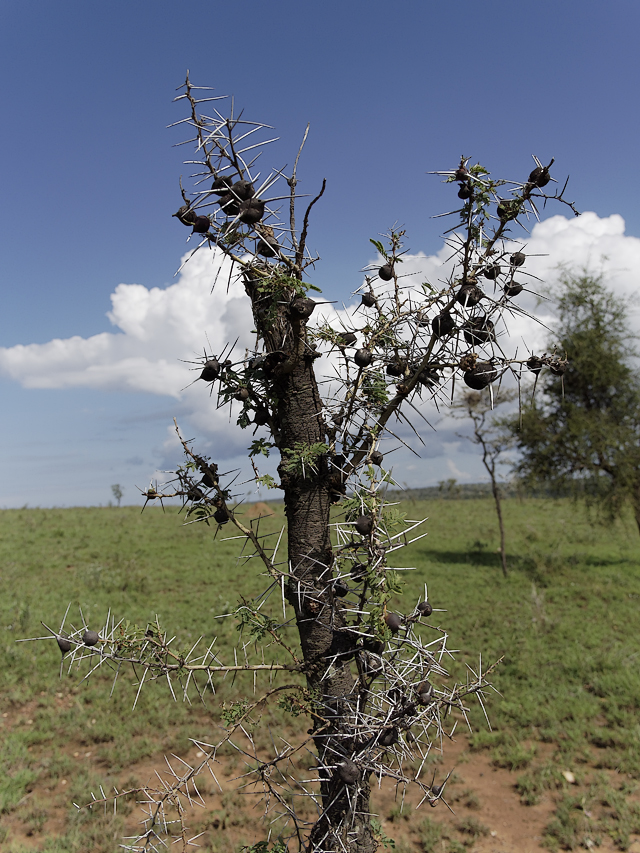
Our guides even demonstrated this behaviour: they agitated some branches, and the ants came right out.
The ants were looking for the source of the disturbance, and to attack it. A very interesting live demo!
Interestingly, a while later, we saw a group of park rangers drive by on some dirt tracks some ways away.
Daniel explained that they will look for poachers or illegal activities, help safari groups, etc:
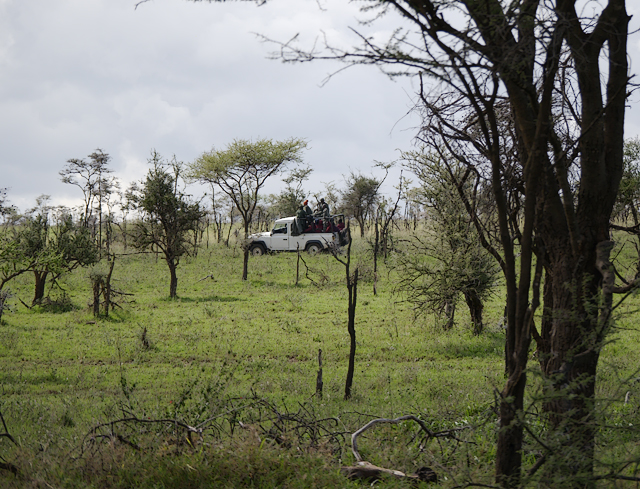
As usual, we would stop for some water and a snack at intervals. Frau A found a natural bench for a rest:
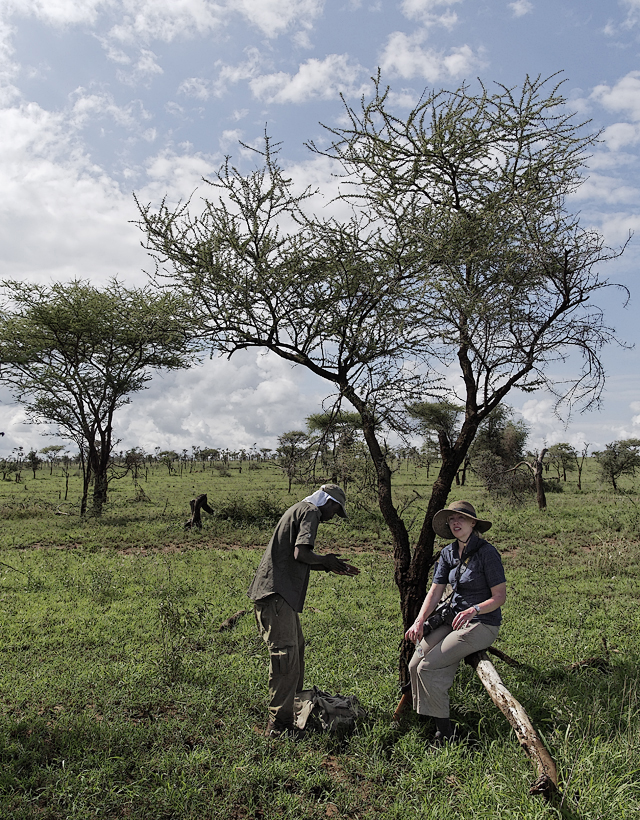
Even on breaks, she was alert to her surroundings and found things to photograph...

... in this case it was a large dragonfly that stayed perched on a nearby branch for a while:
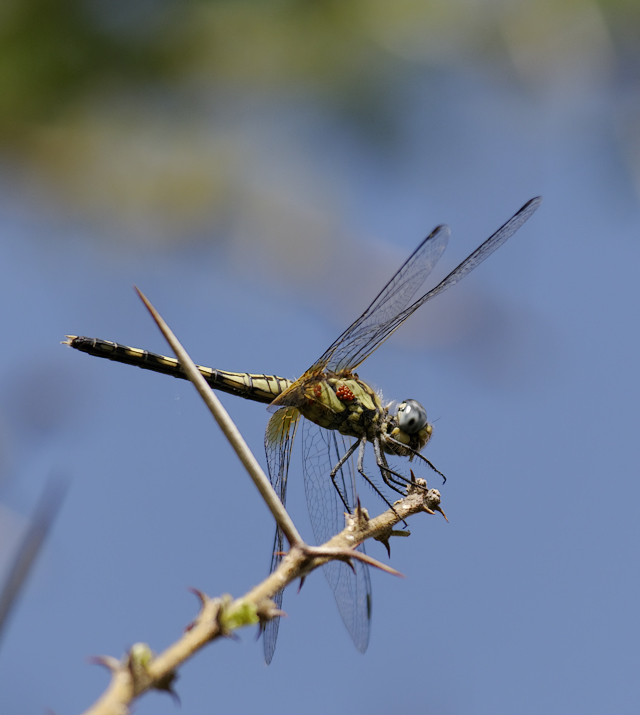
Our guides then pointed out a few more insects - here, a locust:
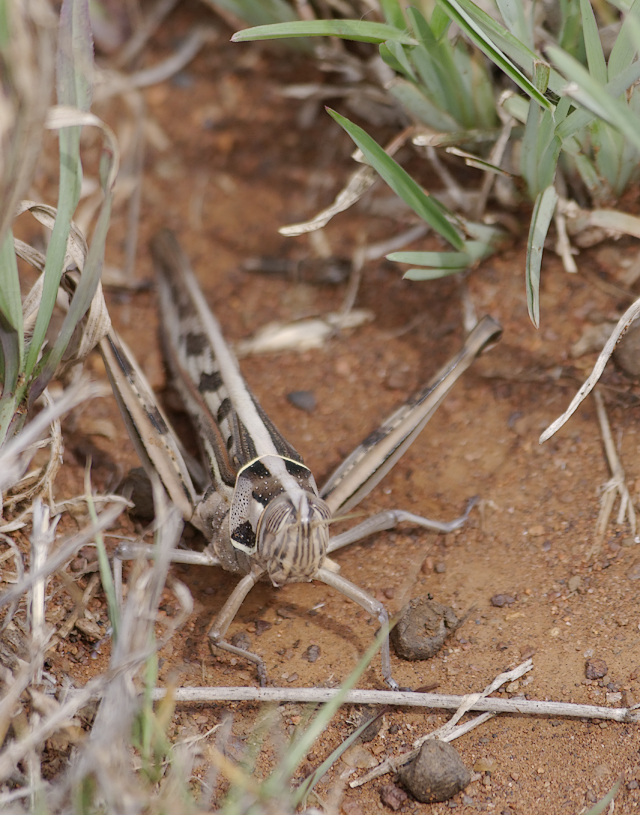
And here, another dung beetle, but one who has stopped rolling and started digging to bury it's dung ball:
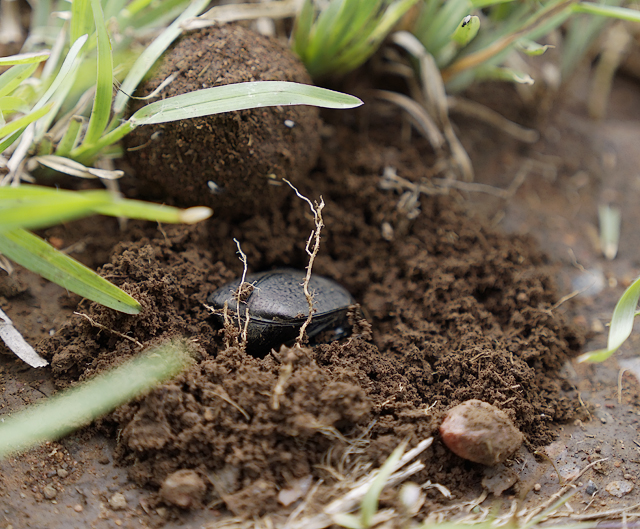
But it wasn't yet the end of the big game for today! A topi observes us from the taller grass:
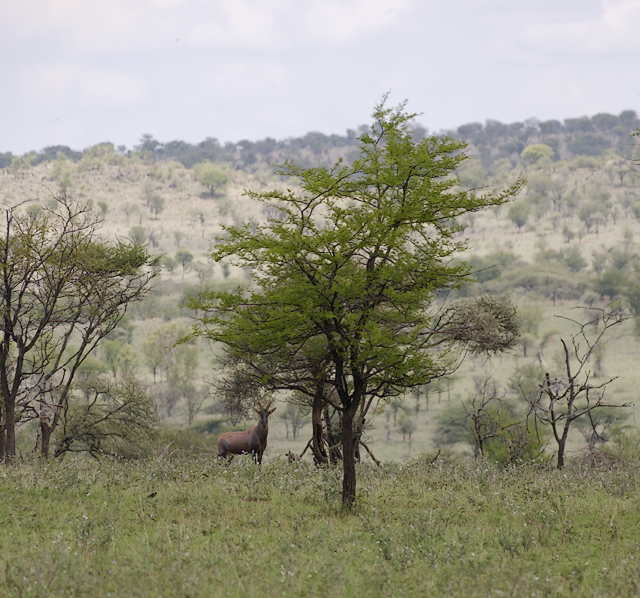
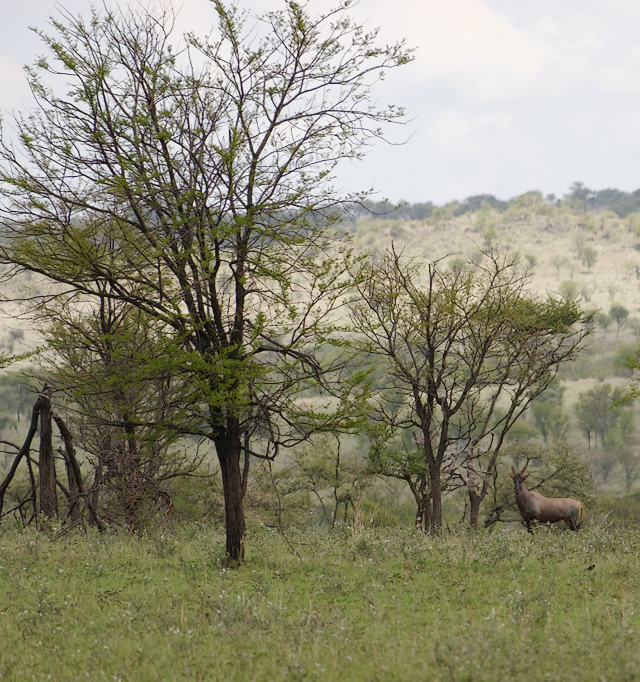
Here are Daniel, Frau A, and Prim. Frau A with one of her cameras in action:
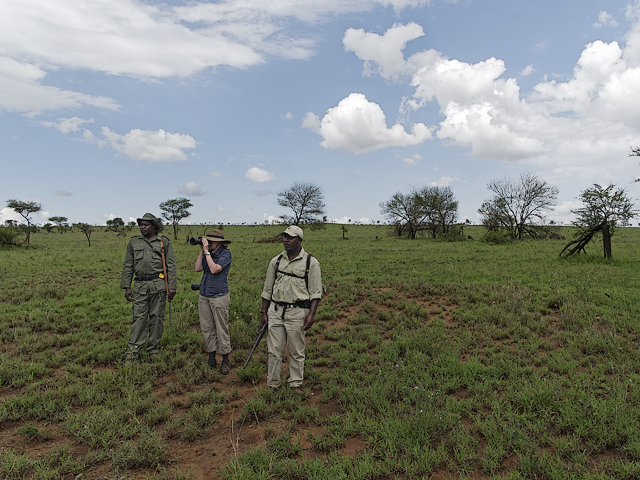
At this point, we had turned back and started heading back in the direction of camp:
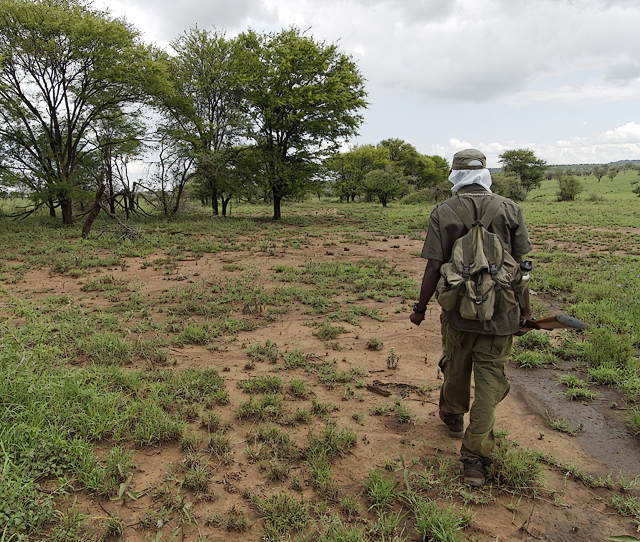
There was a lof of clay in the earth here -- with an unusual reddish hue that we had not seen before:
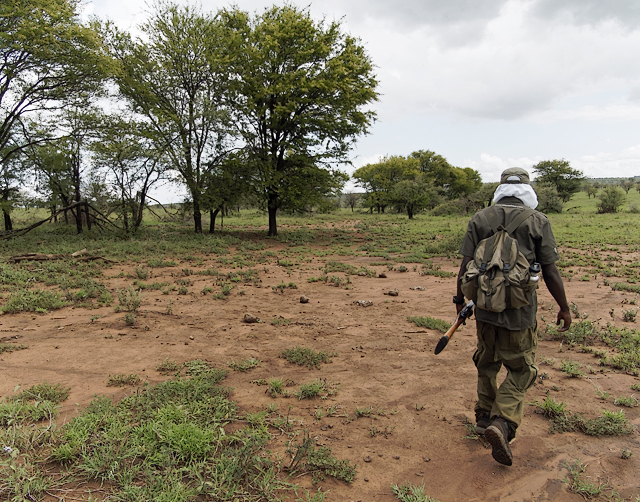
At one point across the fields, we saw the entire topi herd watching us from the far hillside:
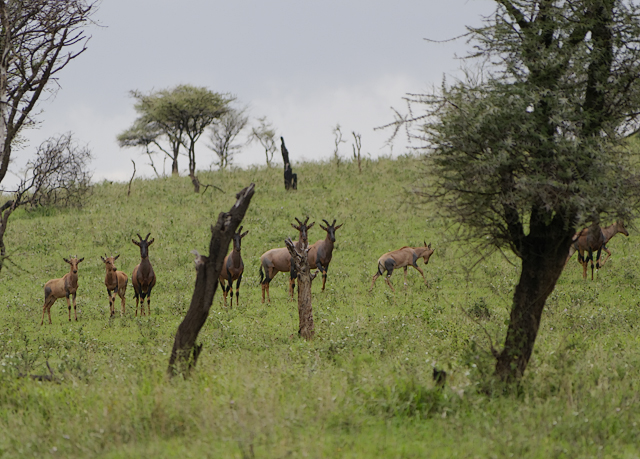
They didn't like the looks of us, and started moving quickly up the hill and away from the humans:
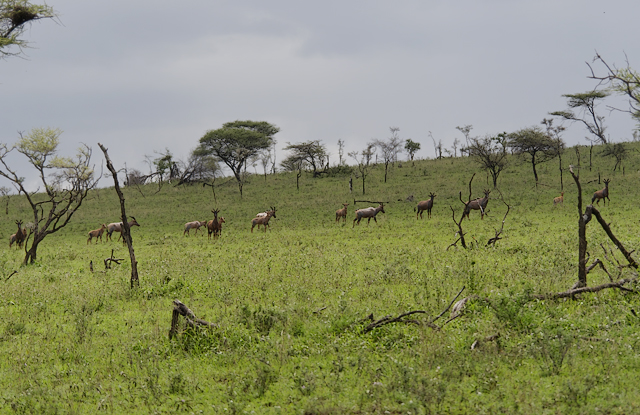
One more look at the Serengeti landscape...
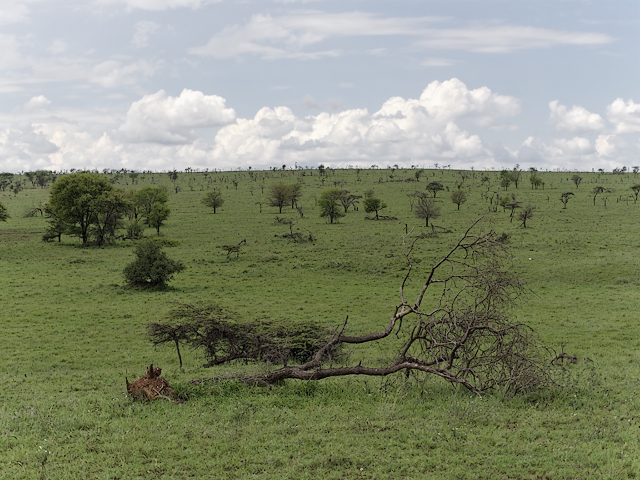
... and then following Mark back "home":
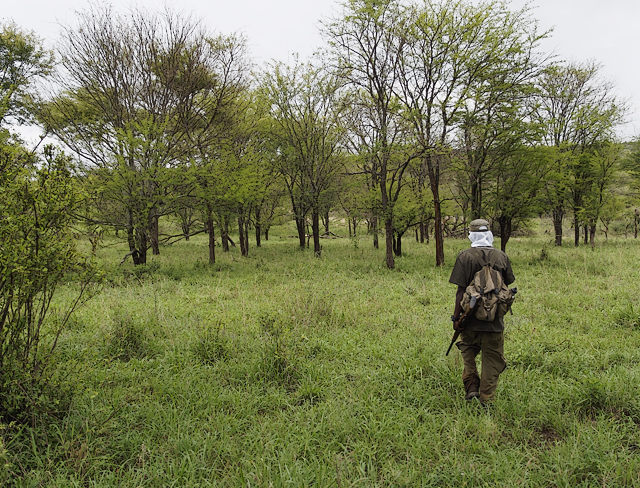
But wait! There's more! We got a surprise on the way back to camp - one of the coolest on the trip.
Here's the story: Mark was in the lead, and he knew we were excited to photograph any wildlife we could.
At one point he yelled "Come here!" so I quickly jogged forward. Sliding through the grass was a black snake, maybe 1m long. He said "it's a cobra - get your camera ready". And then he stomped his foot on the ground...
What does a cobra do when feeling threatened? It faces you, rears up and flares its neck of course.
This is where it gets funny. I was a little shocked, and didn't get a photo in the split second we had.
So what does Mark do? He has us follow it in the grass, asks if I'm ready, and stomps his foot again.
I got a few photos that time! Now that is what I call customer service - thank you Mark!!!

Now I would not normally be one to encourage provoking a cobra, but we're so glad Mark did just that.
We also learned: it pays to have a young, recent-graduate, fearless guide-in-training on the tour with you!
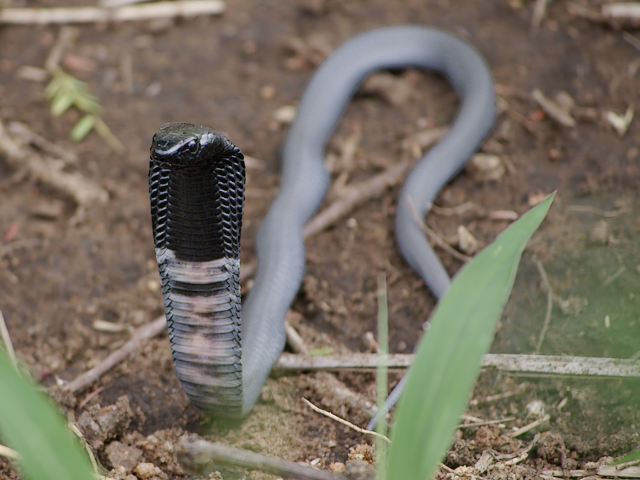
The other interesting thing: when we got home, we had to look up exactly the kind of snake it was. It was not really large (neither long, at 1m, nor that wide around) - so presumably it was a juvenile we had "asked to pose for us".
Based on the photo, we think it was a naja nigricollis -- commonly known as a black-necked spitting cobra.
I guess I was fortunate to stick my camera so close, when its venom can cause permanent blindness.
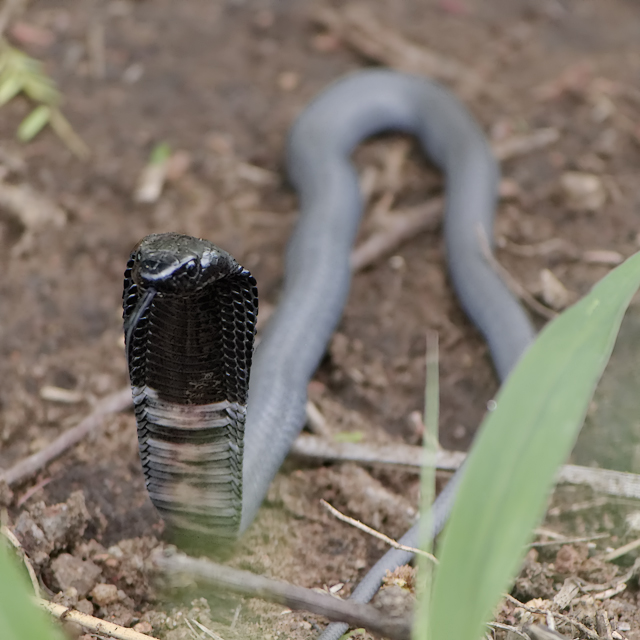
Now THAT was a real Serengeti walking safari experience! It was one of the really unique events of the trip.
And finally... this was our honeymoon. For the wedding, instead of registering for physical gifts (e.g., china, silverware, etc.), we registered different parts of this Tanzanian safari. For this blog post, we wish to heartfully thank:
- Edie C, for the guided walk. This day had the best big game viewing so far. THANK YOU!
- Amie and Kevin H, for the guided walk. How about that black-necked cobra! THANK YOU!
- Judy and Ron H, for the camping overnight. Isn't the landscape fantastic? THANK YOU!
- Ronnie and Jan M, for the camping overnight. After this experience, we didn't want it to end. THANK YOU!
We hope our friends and family enjoy the pictures and story as much as we did living it.
 Herr J ...
Herr J ...  Post a Comment
Post a Comment  Travel tagged
Travel tagged  Orangi River,
Orangi River,  Serengeti National Park,
Serengeti National Park,  Tanzania,
Tanzania,  black-necked spitting cobra,
black-necked spitting cobra,  cobra,
cobra,  dragonfly,
dragonfly,  giraffe,
giraffe,  klipspringer,
klipspringer,  ostrich,
ostrich,  reedbuck,
reedbuck,  topi,
topi,  zebra
zebra  2 References ...
2 References ...  Print Article
Print Article  Email Article
Email Article 



